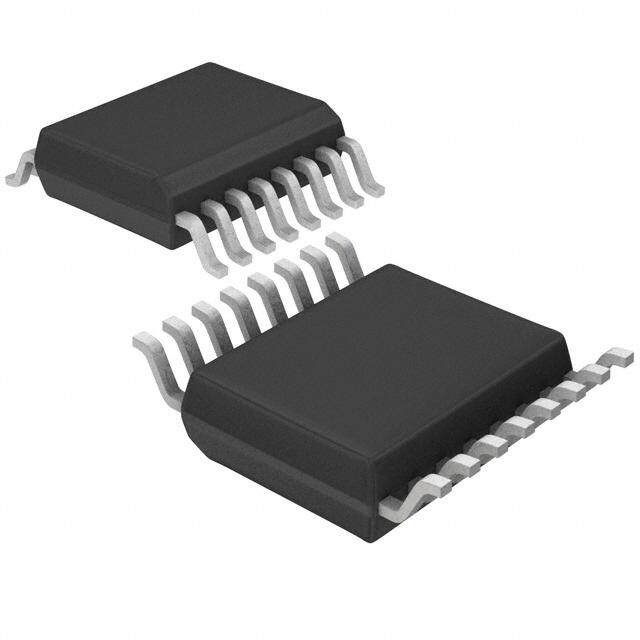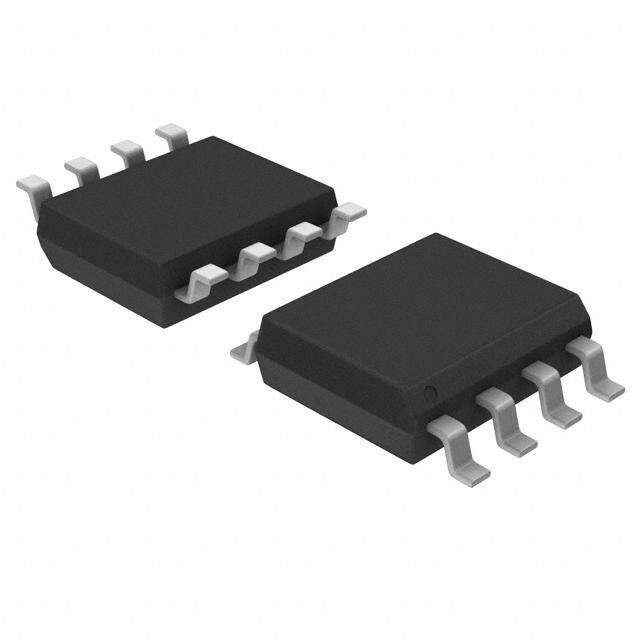ICGOO在线商城 > 集成电路(IC) > 接口 - 传感器,电容式触摸 > PCF8883T/1,118
- 型号: PCF8883T/1,118
- 制造商: NXP Semiconductors
- 库位|库存: xxxx|xxxx
- 要求:
| 数量阶梯 | 香港交货 | 国内含税 |
| +xxxx | $xxxx | ¥xxxx |
查看当月历史价格
查看今年历史价格
PCF8883T/1,118产品简介:
ICGOO电子元器件商城为您提供PCF8883T/1,118由NXP Semiconductors设计生产,在icgoo商城现货销售,并且可以通过原厂、代理商等渠道进行代购。 PCF8883T/1,118价格参考。NXP SemiconductorsPCF8883T/1,118封装/规格:接口 - 传感器,电容式触摸, Capacitive Touch Buttons 。您可以下载PCF8883T/1,118参考资料、Datasheet数据手册功能说明书,资料中有PCF8883T/1,118 详细功能的应用电路图电压和使用方法及教程。
| 参数 | 数值 |
| 产品目录 | |
| 描述 | SENSOR IC CAPACITIVE PROX 8SOIC近程传感器 Capacitive PROXIMITY SWITCH |
| 产品分类 | 电容式触摸传感器,接近传感器 IC近程传感器 |
| 品牌 | NXP Semiconductors |
| 产品手册 | |
| 产品图片 |
|
| rohs | 符合RoHS无铅 / 符合限制有害物质指令(RoHS)规范要求 |
| 产品系列 | NXP Semiconductors PCF8883T/1,118- |
| 数据手册 | |
| 产品型号 | PCF8883T/1,118 |
| PCN封装 | |
| 产品目录页面 | |
| 产品种类 | 近程传感器 |
| 供应商器件封装 | * |
| 其它名称 | 568-4933-1 |
| 分辨率(位) | 14 b |
| 包装 | * |
| 参考设计库 | http://www.digikey.com/rdl/4294959886/4294959868/875 |
| 商标 | NXP Semiconductors |
| 安装类型 | * |
| 安装风格 | SMD/SMT |
| 封装 | Reel |
| 封装/外壳 | 8-SOIC(0.154",3.90mm 宽) |
| 封装/箱体 | SOIC-8 |
| 工作温度 | -40°C ~ 85°C |
| 工厂包装数量 | 2500 |
| 感应方式 | Capacitive |
| 数据接口 | - |
| 数据速率/采样率(SPS,BPS) | - |
| 最大工作温度 | + 85 C |
| 最小工作温度 | - 40 C |
| 标准包装 | 1 |
| 特色产品 | http://www.digikey.com/cn/zh/ph/nxp/PCF8883.html |
| 电压-电源 | 3 V ~ 9 V |
| 电压基准 | - |
| 电流-电源 | 5µA |
| 电源电压 | 3 V to 9 V |
| 电源电流 | 5 uA |
| 类型 | 电容性触摸与近程传感器 |
| 系列 | PCF8883 |
| 触摸面板接口 | - |
| 评估工具 | * |
| 输入/按键数 | - |
| 输出配置 | Digital |

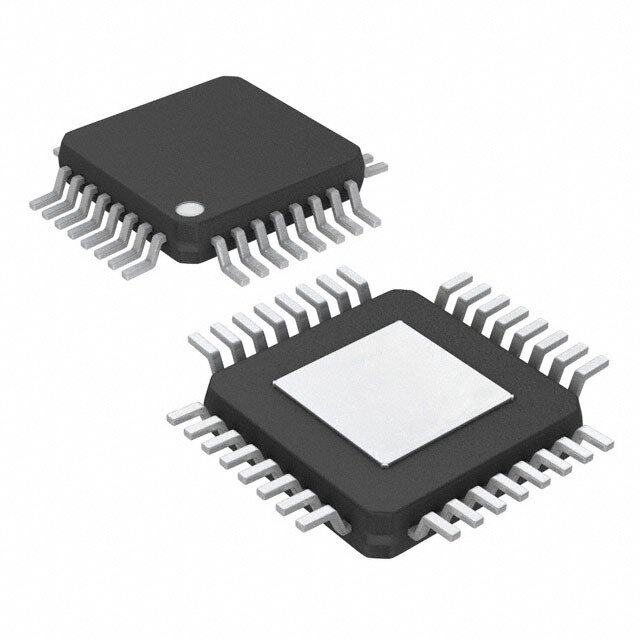
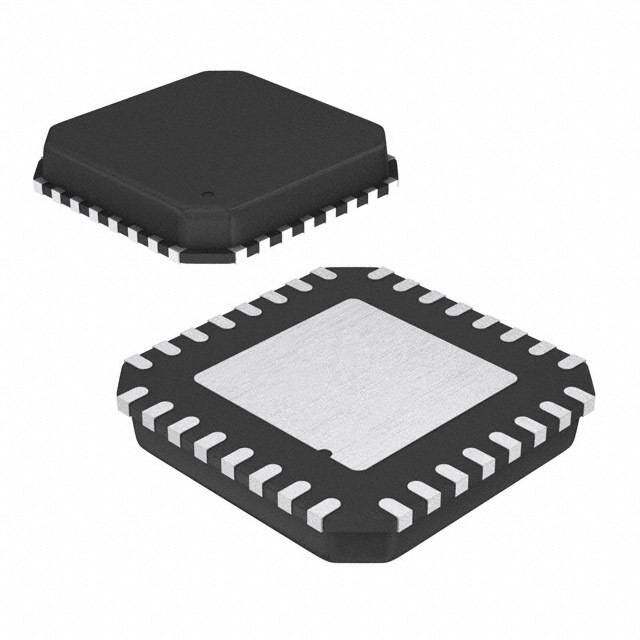
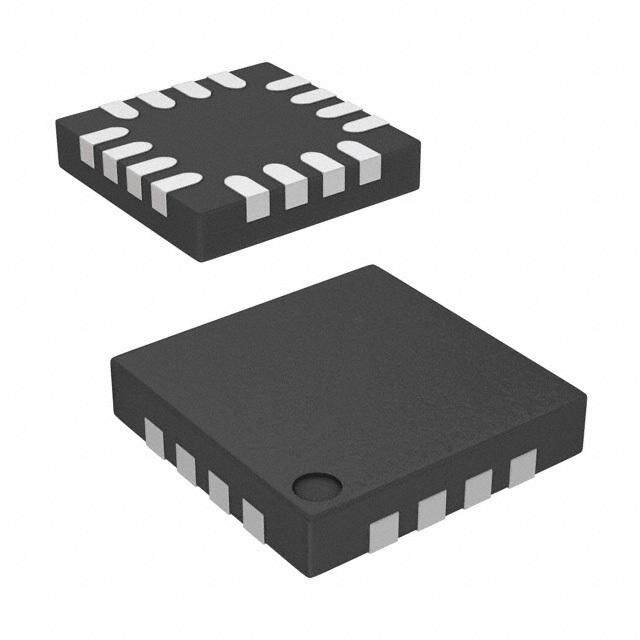
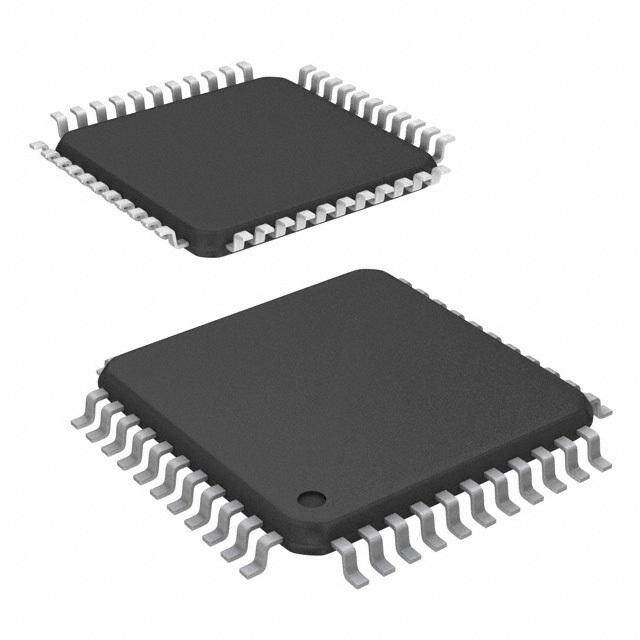

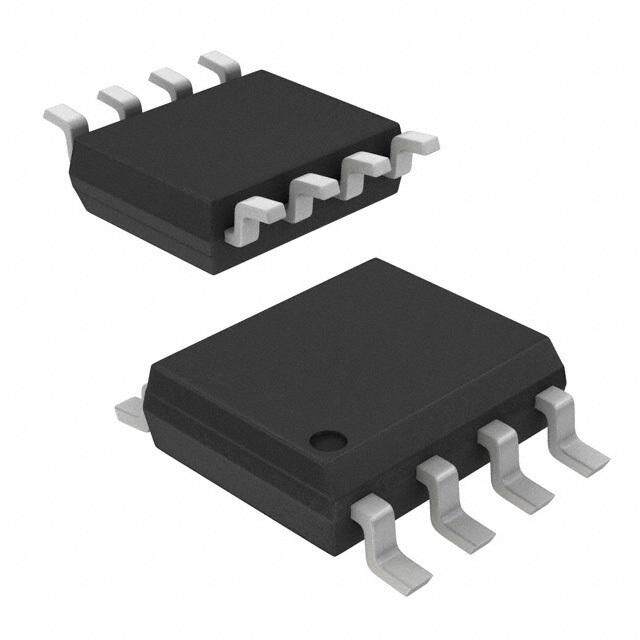
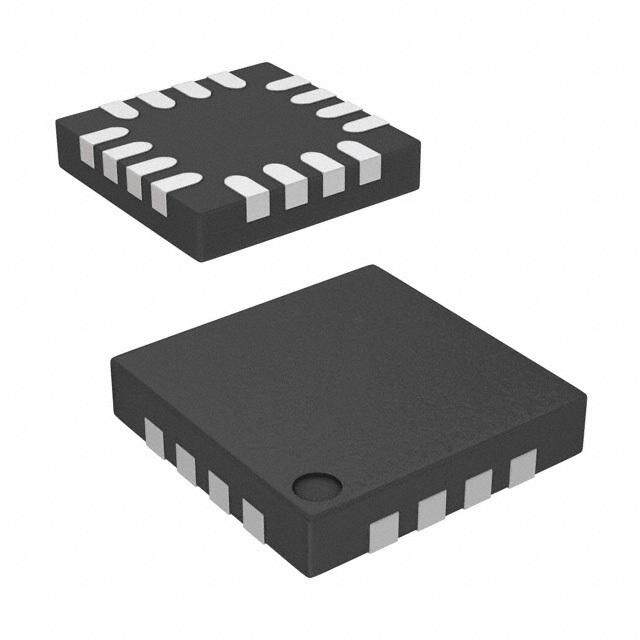
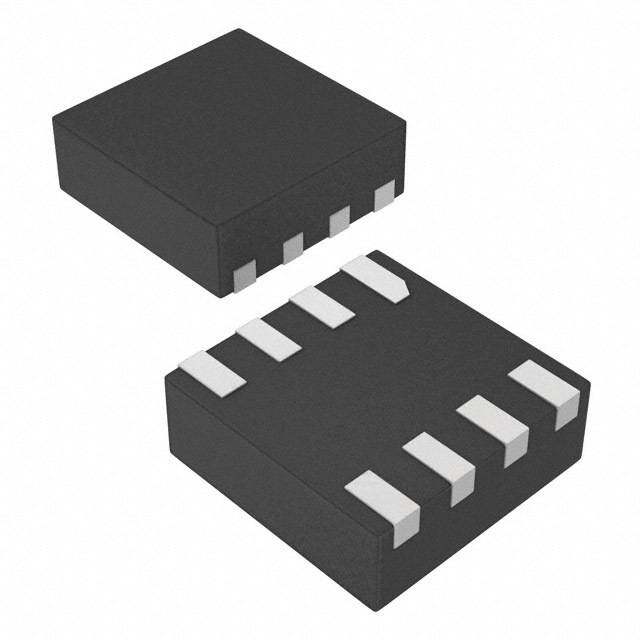

- 商务部:美国ITC正式对集成电路等产品启动337调查
- 曝三星4nm工艺存在良率问题 高通将骁龙8 Gen1或转产台积电
- 太阳诱电将投资9.5亿元在常州建新厂生产MLCC 预计2023年完工
- 英特尔发布欧洲新工厂建设计划 深化IDM 2.0 战略
- 台积电先进制程称霸业界 有大客户加持明年业绩稳了
- 达到5530亿美元!SIA预计今年全球半导体销售额将创下新高
- 英特尔拟将自动驾驶子公司Mobileye上市 估值或超500亿美元
- 三星加码芯片和SET,合并消费电子和移动部门,撤换高东真等 CEO
- 三星电子宣布重大人事变动 还合并消费电子和移动部门
- 海关总署:前11个月进口集成电路产品价值2.52万亿元 增长14.8%

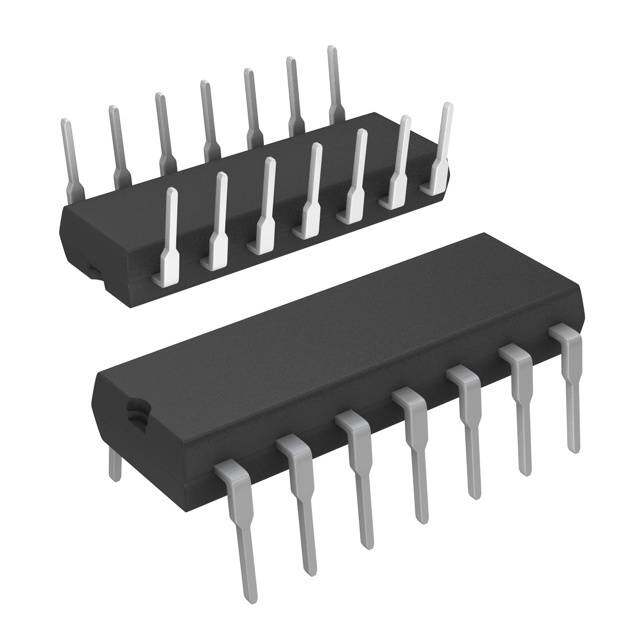
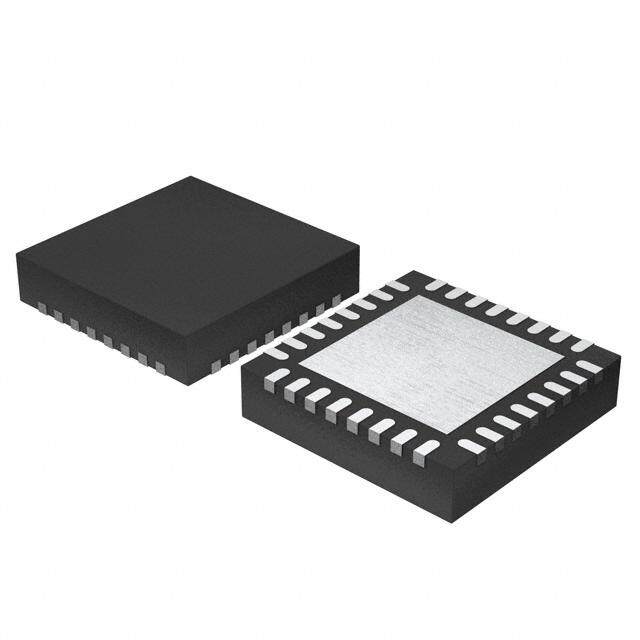
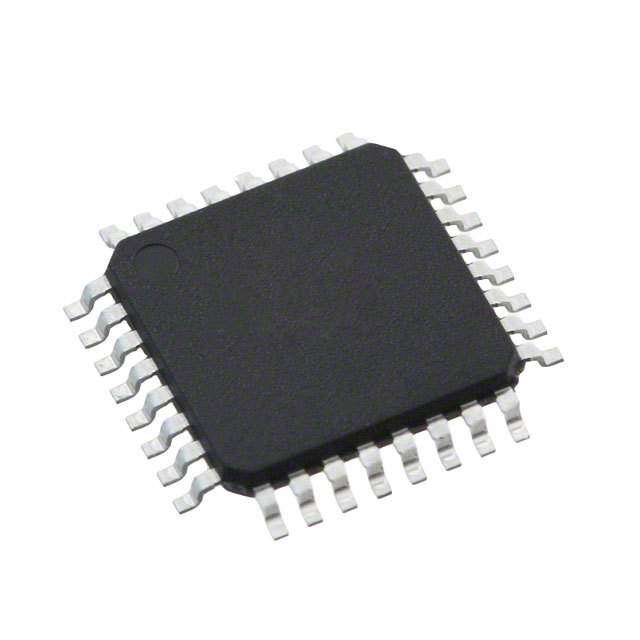
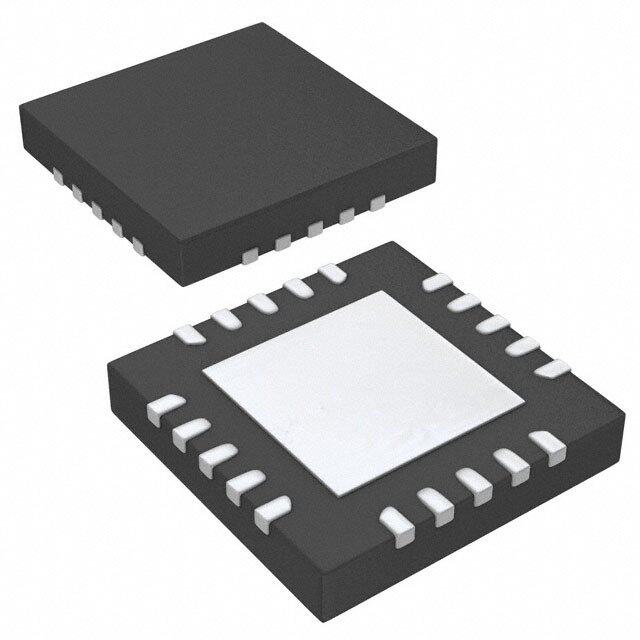
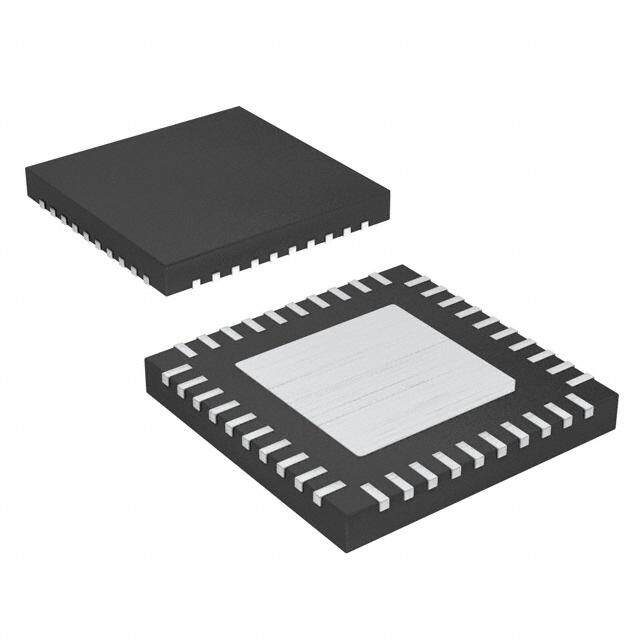
PDF Datasheet 数据手册内容提取
PCF8883 Capacitive touch/proximity switch with auto-calibration, large voltage operating range, and very low power consumption Rev. 4.1 — 14 September 2016 Product data sheet 1. General description The integrated circuit PCF8883 is a capacitive touch and proximity switch that uses a patented (EDISEN) digital method to detect a change in capacitance on a remote sensing plate. Changes in the static capacitance (as opposed to dynamic capacitance changes) are automatically compensated using continuous auto-calibration. Remote sensing plates (e.g. conductive foil) can be connected directly to the IC1 or remotely using a coaxial cable. 2. Features and benefits Dynamic proximity switch Digital processing method Adjustable sensitivity, can be made very high Adjustable response time Wide input capacitance range (10 pF to 60 pF) Automatic calibration A large distance (several meters) between the sensing plate and the IC is possible Open-drain output (P-type MOSFET, external load between pin and ground) Designed for battery powered applications (I = 3A, typical) DD Output configurable as push-button, toggle, or pulse Wide voltage operating range (V = 3 V to 9 V) DD Large temperature operating range (T =40C to +85C) amb Internal voltage regulator Available in SOIC8 and wafer level chip-size package 3. Applications Proximity detection Proximity sensing in Mobile phones Portable entertainment units Switch for medical applications Switch for use in explosive environments Vandal proof switches Transportation: Switches in or under upholstery, leather, handles, mats, and glass 1. The definition of the abbreviations and acronyms used in this data sheet can be found in Section21.
PCF8883 NXP Semiconductors Capacitive touch/proximity switch with auto-calibration Buildings: switch in or under carpets, glass, or tiles Sanitary applications: use of standard metal sanitary parts (e.g. tap) as switch Hermetically sealed keys on a keyboard 4. Ordering information Table 1. Ordering information Type number Package Name Description Version PCF8883T SOIC8 plastic small outline package; 8 leads; PCF8883T body width 3.9 mm PCF8883US WLCSP8 wafer level chip-size package; 8 bumps PCF8883US 4.1 Ordering options Table 2. Ordering opt ions Product type number Orderable part number Sales item Delivery form IC (12NC) revision PCF8883T/1 PCF8883T/1,118 935289766118 tape and reel, 13 inch 1 PCF8883US/7EA/1 PCF8883US/7EA/1Y 935300777518 dry pack, tape and reel, 13 inch 1 5. Marking Table 3. Marking codes Product type number Marking code PCF8883T PCF8883 PCF8883US PC 8883-1 PCF8883 All information provided in this document is subject to legal disclaimers. © NXP Semiconductors N.V. 2016. All rights reserved. Product data sheet Rev. 4.1 — 14 September 2016 2 of 35
PCF8883 NXP Semiconductors Capacitive touch/proximity switch with auto-calibration 6. Block diagram (cid:57)(cid:39)(cid:39)(cid:11)(cid:44)(cid:49)(cid:55)(cid:53)(cid:40)(cid:42)(cid:39)(cid:12) (cid:57)(cid:50)(cid:47)(cid:55)(cid:36)(cid:42)(cid:40)(cid:16) (cid:53)(cid:40)(cid:42)(cid:56)(cid:47)(cid:36)(cid:55)(cid:50)(cid:53) (cid:57)(cid:39)(cid:39) (cid:38)(cid:50)(cid:56)(cid:49)(cid:55)(cid:40)(cid:53) (cid:50)(cid:56)(cid:55) (cid:47)(cid:50)(cid:42)(cid:44)(cid:38) (cid:57)(cid:54)(cid:54) (cid:54)(cid:40)(cid:49)(cid:54)(cid:50)(cid:53) (cid:47)(cid:50)(cid:42)(cid:44)(cid:38) (cid:51)(cid:38)(cid:41)(cid:27)(cid:27)(cid:27)(cid:22) (cid:44)(cid:49) (cid:50)(cid:54)(cid:38)(cid:44)(cid:47)(cid:47)(cid:36)(cid:55)(cid:50)(cid:53) (cid:73)(cid:86) (cid:55)(cid:60)(cid:51)(cid:40) (cid:38)(cid:51)(cid:38) (cid:38)(cid:47)(cid:44)(cid:49) (cid:68)(cid:68)(cid:68)(cid:16)(cid:19)(cid:19)(cid:25)(cid:23)(cid:24)(cid:27) Fig 1. Block diagram of PCF8883 PCF8883 All information provided in this document is subject to legal disclaimers. © NXP Semiconductors N.V. 2016. All rights reserved. Product data sheet Rev. 4.1 — 14 September 2016 3 of 35
PCF8883 NXP Semiconductors Capacitive touch/proximity switch with auto-calibration 7. Pinning information 7.1 Pinning (cid:44)(cid:49) (cid:20) (cid:27) (cid:57)(cid:39)(cid:39)(cid:11)(cid:44)(cid:49)(cid:55)(cid:53)(cid:40)(cid:42)(cid:39)(cid:12) (cid:55)(cid:60)(cid:51)(cid:40) (cid:21) (cid:26) (cid:38)(cid:47)(cid:44)(cid:49) (cid:51)(cid:38)(cid:41)(cid:27)(cid:27)(cid:27)(cid:22)(cid:55) (cid:38)(cid:51)(cid:38) (cid:22) (cid:25) (cid:50)(cid:56)(cid:55) (cid:57)(cid:54)(cid:54) (cid:23) (cid:24) (cid:57)(cid:39)(cid:39) (cid:19)(cid:20)(cid:22)(cid:68)(cid:68)(cid:68)(cid:19)(cid:26)(cid:22) Top view. For mechanical details, see Figure17. Fig 2. Pin configuration of PCF8883T (SOIC8) PCF8883US PCF8883US VDD(INTREGD) TYPE IN IN TYPE VDD(INTREGD) 8 2 1 1 2 8 CLIN 7 3 CPC CPC 3 7 CLIN 5 6 4 4 6 5 VDD OUT VSS VSS OUT VDD aaa-024288 aaa-006459 Top side view Bump view (bottom) side Fig 3. Pin configuration of PCF8883US (WLCSP8); for mechanical details, see Figure18 PCF8883 All information provided in this document is subject to legal disclaimers. © NXP Semiconductors N.V. 2016. All rights reserved. Product data sheet Rev. 4.1 — 14 September 2016 4 of 35
PCF8883 NXP Semiconductors Capacitive touch/proximity switch with auto-calibration 7.2 Pin description Table 4. Pin description Input or input/output pins must always be at a defined level (V or V ) unless otherwise specified. SS DD Symbol Pin Type Description PCF8883T PCF8883US IN 1 1 analog input/output sensor input TYPE 2 2 input pin OUT behavior configuration input CPC 3 3 analog input/output sensitivity setting V [1] 4 4 supply ground supply voltage SS V 5 5 supply supply voltage DD OUT 6 6 output switch output CLIN 7 7 analog input/output sampling rate setting V [2] 8 8 supply internal regulated supply DD(INTREGD) voltage output [1] The substrate (rear side of the die) is connected to V and should be electrically isolated. SS [2] The internal regulated supply voltage output must be decoupled with a decoupling capacitor to V . SS PCF8883 All information provided in this document is subject to legal disclaimers. © NXP Semiconductors N.V. 2016. All rights reserved. Product data sheet Rev. 4.1 — 14 September 2016 5 of 35
PCF8883 NXP Semiconductors Capacitive touch/proximity switch with auto-calibration 8. Functional description Figure4 and Figure5 show the functional principle of the PCF8883. The discharge time (t ) of a chip-internal RC timing circuit, to which the external sensing dch plate is connected via pin IN, is compared to the discharge time (t ) of a second dch(ref) chip-internal reference RC timing circuit. Both RC timing circuits are periodically charged from V via identical switches and then discharged via a resistor to ground DD(INTREGD) (V ). Both switches are synchronized. SS (cid:57)(cid:39)(cid:39)(cid:11)(cid:44)(cid:49)(cid:55)(cid:53)(cid:40)(cid:42)(cid:39)(cid:12) (cid:57)(cid:39)(cid:39)(cid:11)(cid:44)(cid:49)(cid:55)(cid:53)(cid:40)(cid:42)(cid:39)(cid:12) (cid:57)(cid:85)(cid:72)(cid:73) (cid:73)(cid:86) (cid:9) (cid:38)(cid:56)(cid:51) (cid:38)(cid:50)(cid:56)(cid:49)(cid:55)(cid:40)(cid:53) (cid:47)(cid:50)(cid:42)(cid:44)(cid:38) (cid:38)(cid:39)(cid:49) (cid:9) (cid:44)(cid:49) (cid:44)(cid:86)(cid:76)(cid:81)(cid:78) (cid:57)(cid:54)(cid:54) (cid:38)(cid:51)(cid:38) (cid:19)(cid:20)(cid:22)(cid:68)(cid:68)(cid:68)(cid:19)(cid:28)(cid:22)(cid:3) Fig 4. Functional diagram of the sensor logic The charge-discharge cycle is governed by the sampling rate (f ). If the voltage of one of s the RC timing circuits falls below the internal reference voltage V , the respective ref comparator output becomes LOW. The logic following the comparators determines which comparator switches first. If the upper (reference) comparator switches, then a pulse is given on CUP. If the lower (input) comparator switches first, then a pulse is given on CDN (see Figure4). The pulses control the charge on the external capacitor C on pin CPC. Every time a CPC pulse is given on CUP, capacitor C is charged from V for a fixed time CPC DD(INTREGD) causing the voltage on C to rise. Likewise when a pulse occurs on CDN, capacitor CPC C is connected to a current sink to ground for a fixed time causing the voltage on C CPC CPC to fall. PCF8883 All information provided in this document is subject to legal disclaimers. © NXP Semiconductors N.V. 2016. All rights reserved. Product data sheet Rev. 4.1 — 14 September 2016 6 of 35
PCF8883 NXP Semiconductors Capacitive touch/proximity switch with auto-calibration If the capacitance on pin IN increases, the discharge time t increases too. Therefore it dch takes longer for the voltage on the corresponding comparator to drop below V . Only ref once this happens, the comparator output becomes LOW and this results in a pulse on CDN discharging the external capacitor C slightly. Thus most pulses will now be given CPC by CUP. Without further action, capacitor C would then fully charge. CPC However, a chip-internal automatic calibration mechanism that is based on a voltage controlled sink current (I ) connected to pin IN attempts to equalize the discharge time sink t with the internal reference discharge time t . The current source is controlled by dch dch(ref) the voltage on C which causes the capacitance on pin IN to be discharged more CPC quickly in the case that the voltage on C is rising, thereby compensating for the CPC increase in capacitance on input pin IN. This arrangement constitutes a closed-loop control system that constantly attempts to equalize the discharge time t with t . dch dch(ref) This allows compensating for slow changes in capacitance on input pin IN. Fast changes due to an approaching hand for example will not be compensated. In the equilibrium state, the discharge times are equal and the pulses alternate between CUP and CDN. From this also follows, that an increase in capacitor value C results in a smaller CPC voltage change per pulse CUP or CDN. Thus the compensation due to internal current sink source I is slower and therefore the sensitivity of the sensor increases. Likewise a sink decrease in capacitor C results in a lower sensitivity. (For further information see CPC Section14.) (cid:57)(cid:39)(cid:39)(cid:11)(cid:44)(cid:49)(cid:55)(cid:53)(cid:40)(cid:42)(cid:39)(cid:12) (cid:57)(cid:50)(cid:47)(cid:55)(cid:36)(cid:42)(cid:40) (cid:53)(cid:40)(cid:42)(cid:56)(cid:47)(cid:36)(cid:55)(cid:50)(cid:53) (cid:57)(cid:39)(cid:39) (cid:86)(cid:72)(cid:81)(cid:86)(cid:76)(cid:81)(cid:74)(cid:3)(cid:83)(cid:79)(cid:68)(cid:87)(cid:72) (cid:51)(cid:41)(cid:38)(cid:27)(cid:27)(cid:27)(cid:22) (cid:70)(cid:82)(cid:68)(cid:91)(cid:76)(cid:68)(cid:79)(cid:3)(cid:70)(cid:68)(cid:69)(cid:79)(cid:72) (cid:53)(cid:41) (cid:44)(cid:49) (cid:54)(cid:40)(cid:49)(cid:54)(cid:50)(cid:53) (cid:47)(cid:50)(cid:42)(cid:44)(cid:38) (cid:38)(cid:54)(cid:40)(cid:49)(cid:54) (cid:38)(cid:50)(cid:56)(cid:49)(cid:55)(cid:40)(cid:53) (cid:50)(cid:56)(cid:55) (cid:47)(cid:50)(cid:42)(cid:44)(cid:38) (cid:53)(cid:38) (cid:38)(cid:41) (cid:50)(cid:54)(cid:38)(cid:44)(cid:47)(cid:47)(cid:36)(cid:55)(cid:50)(cid:53) (cid:73)(cid:86) (cid:55)(cid:60)(cid:51)(cid:40) (cid:57)(cid:54)(cid:54) (cid:38)(cid:51)(cid:38) (cid:38)(cid:47)(cid:44)(cid:49) (cid:68)(cid:68)(cid:68)(cid:16)(cid:19)(cid:19)(cid:25)(cid:23)(cid:25)(cid:19) C =sensing plate capacitance. SENS RC=external discharge (pull-down) resistor. R =low pass filter resistor. F CF=low pass filter capacitor. Fig 5. Functional principle of the PCF8883 PCF8883 All information provided in this document is subject to legal disclaimers. © NXP Semiconductors N.V. 2016. All rights reserved. Product data sheet Rev. 4.1 — 14 September 2016 7 of 35
PCF8883 NXP Semiconductors Capacitive touch/proximity switch with auto-calibration The counter, following the sensor logic depicted in Figure4, counts the pulses of CUP or CDN respectively. The counter is reset every time the pulse sequence changes from CUP to CDN or the other way around. Pin OUT will only be activated when enough consecutive CUP or CDN pulses occur. Low-level interference or slow changes in the input capacitance do not cause the output to switch. Various measures, such as asymmetrical charge and discharge steps, are taken to ensure that the output switches off correctly. A special start-up circuit ensures that the device reaches equilibrium quickly when the supply is attached. Pin OUT is an open-drain output capable of pulling an external load R (at maximum ext current of 20 mA) up to V . The load resistor must be dimensioned appropriately, taking DD the maximum expected V voltage into account. The output is automatically deactivated DD (short circuit protection) for loads in excess of 30mA. Pin OUT can also drive a CMOS input without connection of the external load. A small internal 150nA current sink I enables a full voltage swing to take place on pin sink OUT, even if no load resistor is connected. This is useful for driving purely capacitive CMOS inputs. The falling slope can be fairly slow in this mode, depending on load capacitance. The sampling rate (f ) corresponds to half of the frequency used in the RC timing circuit. s The sampling rate can be adjusted within a specified range by selecting the value of C . The oscillator frequency is internally modulated by 4% using a pseudo random CLIN signal. This prevents interference caused by local AC-fields. 8.1 Output switching modes The output switching behavior can be selected using pin TYPE (see Figure6). • Push-button (TYPE connected to V ): The output OUT is active as long as the SS capacitive event2 lasts. • Toggle (TYPE connected to V ): The output OUT is activated by the first DD(INTREGD) capacitive event and deactivated by a following capacitive event. • Pulse (C connected between TYPE and V ): The output OUT is activated for a TYPE SS defined time at each capacitive event. The pulse duration is determined by the value of C and is approximately 2.5 ms/nF. TYPE A typical value for C is 4.7nF which results in an output pulse duration of about TYPE 10ms. The maximum value of C is 470 nF which results in a pulse duration of TYPE about1s. Capacitive events are ignored that occur during the time the output is active. Figure6 illustrates the switching behavior for the output switching modes. Additionally the graph illustrates, that short-term disturbances on the sensor are suppressed by the circuit. 2. A capacitive event is a dynamic increase of capacitance at the sensor input pin IN. PCF8883 All information provided in this document is subject to legal disclaimers. © NXP Semiconductors N.V. 2016. All rights reserved. Product data sheet Rev. 4.1 — 14 September 2016 8 of 35
PCF8883 NXP Semiconductors Capacitive touch/proximity switch with auto-calibration Capacitance on input t OUT (push-button) t OUT (toggle) t OUT tclk(H) = CTYPE · 2 ms/nF tclk(H) = CTYPE · 2 ms/nF tclk(H) = CTYPE · 2 ms/nF (pulse) t 013aaa077 Fig 6. Switching modes timing diagram of PCF8883 8.2 Voltage regulator The PCF8883 implements a chip-internal voltage regulator supplied by pin V that DD provides an internal supply (V ) limited to a maximum of 4.6 V. The lock-in DD(INTREGD) voltage V on V is typically 4.0 V. Figure7 shows the relationship between V and lockin DD DD V . DD(INTREGD) (cid:57)(cid:39)(cid:39)(cid:11)(cid:80)(cid:68)(cid:91)(cid:12) (cid:57)(cid:39)(cid:39)(cid:11)(cid:80)(cid:68)(cid:91)(cid:12) (cid:82)(cid:83)(cid:72)(cid:85)(cid:68)(cid:87)(cid:76)(cid:82)(cid:81)(cid:68)(cid:79)(cid:3)(cid:85)(cid:68)(cid:81)(cid:74)(cid:72)(cid:3)(cid:82)(cid:73)(cid:3)(cid:51)(cid:38)(cid:41)(cid:27)(cid:27)(cid:27)(cid:22) (cid:57)(cid:39)(cid:39) (cid:57)(cid:39)(cid:39)(cid:11)(cid:44)(cid:49)(cid:55)(cid:53)(cid:40)(cid:42)(cid:39)(cid:12) (cid:57)(cid:39)(cid:39)(cid:11)(cid:44)(cid:49)(cid:55)(cid:53)(cid:40)(cid:42)(cid:39)(cid:12) (cid:57)(cid:39)(cid:39)(cid:11)(cid:80)(cid:76)(cid:81)(cid:12) (cid:57)(cid:39)(cid:39)(cid:11)(cid:80)(cid:76)(cid:81)(cid:12) (cid:68)(cid:68)(cid:68)(cid:16)(cid:19)(cid:19)(cid:25)(cid:23)(cid:25)(cid:20) Fig 7. Integrated voltage regulator PCF8883 All information provided in this document is subject to legal disclaimers. © NXP Semiconductors N.V. 2016. All rights reserved. Product data sheet Rev. 4.1 — 14 September 2016 9 of 35
PCF8883 NXP Semiconductors Capacitive touch/proximity switch with auto-calibration 9. Safety notes CAUTION This device is sensitive to ElectroStatic Discharge (ESD). Observe precautions for handling electrostatic sensitive devices. Such precautions are described in the ANSI/ESD S20.20, IEC/ST61340-5, JESD625-A or equivalent standards. CAUTION Semiconductors are light sensitive. Exposure to light sources can cause the IC to malfunction. The IC must be protected against light. The protection must be applied to all sides of the IC. 10. Limiting values Table 5. Limiting values In accordance with the Absolute Maximum Rating System (IEC 60134). Symbol Parameter Conditions Min Max Unit V supply voltage 0.5 +9 V DD V input voltage on pins IN, TYPE, CPC 0.5 V +0.5 V I DD(INTREGD) I output current on pin OUT 10 +50 mA O I ground supply current 10 +50 mA SS I input current on any other pin 10 +10 mA I P total power dissipation - 100 mW tot V electrostatic discharge HBM [1] - 2500 V ESD voltage MM [2] - 200 V I latch-up current [3] - 100 mA lu T storage temperature [4] 60 +125 C stg T ambient temperature operating device 40 +85 C amb [1] Pass level; Human Body Model (HBM) according to Ref. 9 “JESD22-A114”. [2] Pass level; Machine Model (MM), according to Ref. 10 “JESD22-A115”. [3] Pass level; latch-up testing, according to Ref. 11 “JESD78” at maximum ambient temperature (T ). amb(max) [4] According to the store and transport requirements (see Ref. 14 “UM10569”) the devices have to be stored at a temperature of +8C to +45C and a humidity of 25% to 75%. PCF8883 All information provided in this document is subject to legal disclaimers. © NXP Semiconductors N.V. 2016. All rights reserved. Product data sheet Rev. 4.1 — 14 September 2016 10 of 35
PCF8883 NXP Semiconductors Capacitive touch/proximity switch with auto-calibration 11. Static characteristics Table 6. Static charac teristics V = 5 V, T = +25 C; unless otherwise specified. DD amb Symbol Parameter Conditions Min Typ Max Unit V supply voltage 10pF C 40pF; [1] 3.0 - 9.0 V DD i 40C T +85C amb 10pF C 35pF; [2] 2.8 - 9.0 V i 20C T +85C amb V internal regulated supply voltage 3.0 4.0 4.6 V DD(INTREGD) V internal regulated supply voltage regulator voltage drop - 10 50 mV DD(INTREGD) variation I supply current idle state; f = 1 kHz [3] DD s V =5.0V - 3 5 A DD V =3.0V - 2.2 3.5 A DD I sink current internal constant current to V - 150 - nA sink SS V output voltage on pin OUT; pull-up voltage 0 V 9.0 V O DD I output current P-MOS [4] 0 10 20 mA O short circuit protection 20 30 50 mA V 0.6 V O V saturation voltage on pin OUT; I = +10 mA sat O V =5.0V 0.1 0.2 0.4 V DD V =3.0V 0.1 0.3 0.5 V DD C decoupling capacitance on pin V [5] 100 - 220 nF dec DD(INTREGD) V input voltage on pin CPC 0.6 - V 0.5 V I(CPC) DD(INTREGD) [1] Alternatively an external discharge resistor R can be used (see Section14). C [2] Tested on sample basis. [3] Idle state is the steady state after completed power-on without any activity on the sensor plate and the voltage on the reservoir capacitor C settled. CPC [4] For reliability reasons, the average output current must be limited to 4.6mA at 70Cand 3.0mA at 85C. [5] External ceramic chip capacitor recommended (see Figure16). PCF8883 All information provided in this document is subject to legal disclaimers. © NXP Semiconductors N.V. 2016. All rights reserved. Product data sheet Rev. 4.1 — 14 September 2016 11 of 35
PCF8883 NXP Semiconductors Capacitive touch/proximity switch with auto-calibration 12. Dynamic characteristics Table 7. Dynamic cha racteristics V = 5V, C = 22 pF, C = 470 nF, T = +25 C; unless otherwise specified. DD CLIN CPC amb Symbol Parameter Conditions Min Typ Max Unit C capacitance on pin CLIN 0 22 100 pF CLIN C capacitance on pin CPC X7R ceramic chip capacitor 90 470 2500 nF CPC N equivalent digital resolution - 14 - bit res(dig)eq C capacitance on pin TYPE 0.1 - 470 nF TYPE C input capacitance sensing plate and connecting cable i V =5.0V 10 - 60 pF DD T =40Cto+85C; 10 - 40 pF amb V =3.0V DD t start-up time until normal operation is established - 0.5 - s startup t pulse duration on pin OUT; - 2.5 - ms/nF p in pulse mode; C 10nF TYPE f sampling frequency C = 0 pF - 3.3 - kHz s CLIN C = 22 pF (typical value) - 1 - kHz CLIN C = 100 pF - 275 - Hz CLIN t switching time at f = 1 kHz - 64 - ms sw s 13. Characteristic curves 13.1 Power consumption (cid:19)(cid:19)(cid:20)(cid:68)(cid:68)(cid:78)(cid:27)(cid:22)(cid:28) (cid:22)(cid:17)(cid:24) (cid:44)(cid:39)(cid:39)(cid:3) (cid:11)(cid:151)(cid:36)(cid:12) (cid:22)(cid:17)(cid:19) (cid:21)(cid:17)(cid:24) (cid:21)(cid:17)(cid:19) (cid:21) (cid:23) (cid:25) (cid:27) (cid:20)(cid:19) (cid:57)(cid:39)(cid:39)(cid:3)(cid:11)(cid:57)(cid:12) Idle state; fs=1kHz; Tamb=25C. Fig 8. I with respect to V DD DD PCF8883 All information provided in this document is subject to legal disclaimers. © NXP Semiconductors N.V. 2016. All rights reserved. Product data sheet Rev. 4.1 — 14 September 2016 12 of 35
PCF8883 NXP Semiconductors Capacitive touch/proximity switch with auto-calibration (cid:19)(cid:19)(cid:20)(cid:68)(cid:68)(cid:78)(cid:27)(cid:23)(cid:19) (cid:23)(cid:17)(cid:19) (cid:44)(cid:39)(cid:39)(cid:3) (cid:11)(cid:151)(cid:36)(cid:12) (cid:22)(cid:17)(cid:24) (cid:57)(cid:39)(cid:39)(cid:3)(cid:32)(cid:3)(cid:28)(cid:3)(cid:57) (cid:22)(cid:17)(cid:19) (cid:21)(cid:17)(cid:24) (cid:57)(cid:39)(cid:39)(cid:3)(cid:32)(cid:3)(cid:22)(cid:3)(cid:57) (cid:21)(cid:17)(cid:19) (cid:20)(cid:17)(cid:24) (cid:16)(cid:24)(cid:19) (cid:19) (cid:24)(cid:19) (cid:20)(cid:19)(cid:19) (cid:55)(cid:72)(cid:80)(cid:83)(cid:72)(cid:85)(cid:68)(cid:87)(cid:88)(cid:85)(cid:72)(cid:3)(cid:11)(cid:131)(cid:38)(cid:12) Idle state; f =1kHz. s Fig 9. I with respect to temperature DD (cid:19)(cid:19)(cid:20)(cid:68)(cid:68)(cid:78)(cid:27)(cid:23)(cid:20) (cid:23)(cid:17)(cid:19) (cid:44)(cid:39)(cid:39)(cid:3) (cid:11)(cid:151)(cid:36)(cid:12) (cid:22)(cid:17)(cid:24) (cid:22)(cid:17)(cid:19) (cid:21)(cid:17)(cid:24) (cid:21)(cid:17)(cid:19) (cid:20)(cid:17)(cid:24) (cid:21)(cid:24)(cid:19) (cid:26)(cid:24)(cid:19) (cid:20)(cid:21)(cid:24)(cid:19) (cid:20)(cid:26)(cid:24)(cid:19) (cid:73)(cid:86)(cid:3)(cid:11)(cid:43)(cid:93)(cid:12) Idle state; VDD=6V; Tamb=25C. Fig 10. I with respect to sampling frequency (f ) DD s PCF8883 All information provided in this document is subject to legal disclaimers. © NXP Semiconductors N.V. 2016. All rights reserved. Product data sheet Rev. 4.1 — 14 September 2016 13 of 35
PCF8883 NXP Semiconductors Capacitive touch/proximity switch with auto-calibration 13.2 Typical reaction time (cid:19)(cid:19)(cid:20)(cid:68)(cid:68)(cid:78)(cid:27)(cid:23)(cid:21) (cid:22)(cid:19)(cid:19) (cid:87)(cid:86)(cid:90)(cid:3) (cid:11)(cid:80)(cid:86)(cid:12) (cid:21)(cid:19)(cid:19) (cid:20)(cid:19)(cid:19) (cid:19) (cid:19) (cid:24)(cid:19)(cid:19) (cid:20)(cid:19)(cid:19)(cid:19) (cid:20)(cid:24)(cid:19)(cid:19) (cid:21)(cid:19)(cid:19)(cid:19) (cid:73)(cid:86)(cid:3)(cid:11)(cid:43)(cid:93)(cid:12) VDD=6V; Tamb=25C. Fig 11. Switching time (t ) with respect to sampling frequency (f ) sw s (cid:19)(cid:19)(cid:20)(cid:68)(cid:68)(cid:78)(cid:27)(cid:23)(cid:22) (cid:21)(cid:24)(cid:19) (cid:87)(cid:86)(cid:90)(cid:3) (cid:11)(cid:80)(cid:86)(cid:12) (cid:21)(cid:19)(cid:19) (cid:20)(cid:24)(cid:19) (cid:20)(cid:19)(cid:19) (cid:24)(cid:19) (cid:19) (cid:19) (cid:23)(cid:19) (cid:27)(cid:19) (cid:20)(cid:21)(cid:19) (cid:38)(cid:38)(cid:47)(cid:44)(cid:49)(cid:3)(cid:11)(cid:83)(cid:41)(cid:12) VDD=6V; Tamb=25C. Fig 12. Switching time (t ) with respect to capacitor on pin CLIN (C ) sw CLIN PCF8883 All information provided in this document is subject to legal disclaimers. © NXP Semiconductors N.V. 2016. All rights reserved. Product data sheet Rev. 4.1 — 14 September 2016 14 of 35
PCF8883 NXP Semiconductors Capacitive touch/proximity switch with auto-calibration (cid:19)(cid:19)(cid:20)(cid:68)(cid:68)(cid:78)(cid:27)(cid:23)(cid:23) (cid:26)(cid:24) (cid:87)(cid:86)(cid:90)(cid:3) (cid:11)(cid:80)(cid:86)(cid:12) (cid:26)(cid:19) (cid:25)(cid:24) (cid:25)(cid:19) (cid:24)(cid:24) (cid:24)(cid:19) (cid:16)(cid:24)(cid:19) (cid:19) (cid:24)(cid:19) (cid:20)(cid:19)(cid:19) (cid:55)(cid:72)(cid:80)(cid:83)(cid:72)(cid:85)(cid:68)(cid:87)(cid:88)(cid:85)(cid:72)(cid:3)(cid:11)(cid:131)(cid:38)(cid:12) V =6V. DD Fig 13. Switching time (t ) with respect to temperature sw 13.3 Reservoir capacitor voltage (cid:19)(cid:19)(cid:20)(cid:68)(cid:68)(cid:78)(cid:27)(cid:23)(cid:24) (cid:22) (cid:57)(cid:44)(cid:11)(cid:38)(cid:51)(cid:38)(cid:12)(cid:3) (cid:11)(cid:57)(cid:12) (cid:21) (cid:20) (cid:19) (cid:19) (cid:21)(cid:19) (cid:23)(cid:19) (cid:25)(cid:19) (cid:38)(cid:44)(cid:49)(cid:3)(cid:11)(cid:83)(cid:41)(cid:12) VDD=6V; Tamb=25C. VI(CPC)=input voltage on pin CPC. CIN=capacitor on pin IN. Fig 14. Input voltage on pin CPC (V ) with respect to capacitor on pin IN (C ) I(CPC) IN PCF8883 All information provided in this document is subject to legal disclaimers. © NXP Semiconductors N.V. 2016. All rights reserved. Product data sheet Rev. 4.1 — 14 September 2016 15 of 35
PCF8883 NXP Semiconductors Capacitive touch/proximity switch with auto-calibration (cid:19)(cid:19)(cid:20)(cid:68)(cid:68)(cid:78)(cid:27)(cid:23)(cid:25) (cid:22)(cid:17)(cid:24) (cid:38)(cid:44)(cid:49)(cid:3)(cid:32)(cid:3)(cid:25)(cid:19)(cid:17)(cid:27)(cid:3)(cid:83)(cid:41) (cid:57)(cid:44)(cid:11)(cid:38)(cid:51)(cid:38)(cid:12) (cid:11)(cid:57)(cid:12) (cid:22)(cid:17)(cid:19) (cid:21)(cid:17)(cid:24) (cid:38)(cid:44)(cid:49)(cid:3)(cid:32)(cid:3)(cid:22)(cid:26)(cid:3)(cid:83)(cid:41) (cid:21)(cid:17)(cid:19) (cid:16)(cid:24)(cid:19) (cid:19) (cid:24)(cid:19) (cid:20)(cid:19)(cid:19) (cid:55)(cid:72)(cid:80)(cid:83)(cid:72)(cid:85)(cid:68)(cid:87)(cid:88)(cid:85)(cid:72)(cid:3)(cid:11)(cid:131)(cid:38)(cid:12) V =6V. DD VI(CPC)=input voltage on pin CPC. Fig 15. Input voltage on pin CPC (V ) with respect to temperature I(CPC) PCF8883 All information provided in this document is subject to legal disclaimers. © NXP Semiconductors N.V. 2016. All rights reserved. Product data sheet Rev. 4.1 — 14 September 2016 16 of 35
PCF8883 NXP Semiconductors Capacitive touch/proximity switch with auto-calibration 14. Application information Figure16 shows the typical connections for a general application3. The positive supply is connected to pin V . It is recommended to connect smoothing capacitors to ground to DD both V and V (values for C , see Table6). DD DD(INTREGD) dec (cid:54)(cid:40)(cid:49)(cid:54)(cid:44)(cid:49)(cid:42)(cid:3)(cid:51)(cid:47)(cid:36)(cid:55)(cid:40) (cid:53)(cid:38) (cid:38)(cid:41) (cid:38)(cid:50)(cid:36)(cid:59)(cid:44)(cid:36)(cid:47)(cid:3)(cid:38)(cid:36)(cid:37)(cid:47)(cid:40) (cid:53)(cid:41) (cid:44)(cid:49) (cid:57)(cid:39)(cid:39)(cid:11)(cid:44)(cid:49)(cid:55)(cid:53)(cid:40)(cid:42)(cid:39)(cid:12) (cid:38)(cid:54)(cid:40)(cid:49)(cid:54) (cid:57)(cid:39)(cid:39)(cid:11)(cid:44)(cid:49)(cid:55)(cid:53)(cid:40)(cid:42)(cid:39)(cid:12) (cid:55)(cid:82)(cid:74)(cid:74)(cid:79)(cid:72) (cid:51)(cid:88)(cid:79)(cid:86)(cid:72) (cid:55)(cid:60)(cid:51)(cid:40) (cid:38)(cid:47)(cid:44)(cid:49) (cid:51)(cid:88)(cid:86)(cid:75)(cid:16) (cid:69)(cid:88)(cid:87)(cid:87)(cid:82)(cid:81) (cid:51)(cid:38)(cid:41)(cid:27)(cid:27)(cid:27)(cid:22) (cid:38)(cid:51)(cid:38) (cid:50)(cid:56)(cid:55) (cid:57)(cid:54)(cid:54) (cid:57)(cid:39)(cid:39) (cid:19)(cid:20)(cid:22)(cid:68)(cid:68)(cid:68)(cid:19)(cid:26)(cid:28) C =sensing plate capacitance. SENS The coaxial cable is optional. Fig 16. Typical application The sampling rate is determined by the capacitance C on pin CLIN. A higher sampling CLIN rate reduces the reaction time and increases the current consumption. The sensing plate capacitance C may consist of a small metal area, for example SENS behind an isolating layer. The sensing plate can be connected to a coaxial cable (C ) CABLE which in turn is connected to the input pin IN. Alternatively, the sensing plate can be directly connected to the input pin IN. An internal low pass filter is used to reduce RF interference. An additional low pass filter consisting of a resistor R and capacitor C can F F be added to the input to further improve RF immunity as required. For good performance, the total amount of capacitance on the input (C +C +C ) should be in the SENS CABLE F proper range, the optimum point being around 30pF. These conditions allow the control loop to adapt to the static capacitance on C and to compensate for slow changes in SENS the sensing plate capacitance. A higher capacitive input loading is possible if an additional discharge resistor R is placed as shown in Figure16. Resistor R simply reduces the C C discharge time such that the internal timing requirements are fulfilled. The sensitivity of the sensor can be influenced by the sensing plate area and capacitor C . The sensitivity is significantly reduced when C is reduced. When maximum CPC CPC sensitivity is desired C can be increased, but this also increases sensitivity to CPC interference. Pin CPC has high-impedance and is sensitive to leakage currents. 3. For further information, see Ref. 4 “AN10832”. Information about the appropriate evaluation board can be found in Ref. 13 “UM10370”. PCF8883 All information provided in this document is subject to legal disclaimers. © NXP Semiconductors N.V. 2016. All rights reserved. Product data sheet Rev. 4.1 — 14 September 2016 17 of 35
PCF8883 NXP Semiconductors Capacitive touch/proximity switch with auto-calibration Remark: C should be a high-quality foil or ceramic capacitor, for example an CPC X7R type. When limiting the maximum input capacitance to 35pF and the minimum operating temperature to 20C then the minimum operating voltage can be reduced to 2.8V. The main limitation when lowering the supply voltage is a reduction in the range of the V I(CPC) voltage, which is specified from 0.6V to V 0.3V. Reducing the V working range DD I(CPC) is equivalent to reducing the input capacitance range. Additionally, V increases with I(CPC) decreasing temperature, as illustrated in Figure14 and Figure15. This means that it is possible to lower the supply voltage if the minimum temperature will be raised accordingly. For the choice of proper component values for a given application, the component specifications in Table6 and Table7 must be followed. PCF8883 All information provided in this document is subject to legal disclaimers. © NXP Semiconductors N.V. 2016. All rights reserved. Product data sheet Rev. 4.1 — 14 September 2016 18 of 35
PCF8883 NXP Semiconductors Capacitive touch/proximity switch with auto-calibration 15. Package outline (cid:54)(cid:50)(cid:44)(cid:38)(cid:27)(cid:29)(cid:3)(cid:83)(cid:79)(cid:68)(cid:86)(cid:87)(cid:76)(cid:70)(cid:3)(cid:86)(cid:80)(cid:68)(cid:79)(cid:79)(cid:3)(cid:82)(cid:88)(cid:87)(cid:79)(cid:76)(cid:81)(cid:72)(cid:3)(cid:83)(cid:68)(cid:70)(cid:78)(cid:68)(cid:74)(cid:72)(cid:30)(cid:3)(cid:27)(cid:3)(cid:79)(cid:72)(cid:68)(cid:71)(cid:86)(cid:30)(cid:3)(cid:69)(cid:82)(cid:71)(cid:92)(cid:3)(cid:90)(cid:76)(cid:71)(cid:87)(cid:75)(cid:3)(cid:22)(cid:17)(cid:28)(cid:3)(cid:80)(cid:80) (cid:51)(cid:38)(cid:41)(cid:27)(cid:27)(cid:27)(cid:22)(cid:55) (cid:39) (cid:40) (cid:36) (cid:59) (cid:70) (cid:92) (cid:43)(cid:40) (cid:89) (cid:36) (cid:61) (cid:27) (cid:24) (cid:36) (cid:36)(cid:21) (cid:11)(cid:36)(cid:22)(cid:12) (cid:36)(cid:20) (cid:537) (cid:83)(cid:76)(cid:81)(cid:3)(cid:20)(cid:3)(cid:3)(cid:76)(cid:81)(cid:71)(cid:72)(cid:91) (cid:47)(cid:83) (cid:47) (cid:71)(cid:72)(cid:87)(cid:68)(cid:76)(cid:79)(cid:3)(cid:59) (cid:20) (cid:23) (cid:72) (cid:69)(cid:83) (cid:90) (cid:19) (cid:21)(cid:17)(cid:24) (cid:24)(cid:3)(cid:80)(cid:80) (cid:86)(cid:70)(cid:68)(cid:79)(cid:72) (cid:39)(cid:76)(cid:80)(cid:72)(cid:81)(cid:86)(cid:76)(cid:82)(cid:81)(cid:86) (cid:56)(cid:81)(cid:76)(cid:87) (cid:36) (cid:36)(cid:20) (cid:36)(cid:21) (cid:36)(cid:22) (cid:69)(cid:83) (cid:70) (cid:39)(cid:11)(cid:20)(cid:12) (cid:40)(cid:11)(cid:21)(cid:12) (cid:72) (cid:43)(cid:40) (cid:47) (cid:47)(cid:83) (cid:89) (cid:90) (cid:92) (cid:61)(cid:11)(cid:20)(cid:12) (cid:537) (cid:80)(cid:68)(cid:91) (cid:20)(cid:17)(cid:26)(cid:22) (cid:19)(cid:17)(cid:21)(cid:24) (cid:20)(cid:17)(cid:23)(cid:27) (cid:19)(cid:17)(cid:23)(cid:28) (cid:19)(cid:17)(cid:21)(cid:23)(cid:28) (cid:24)(cid:17)(cid:19) (cid:22)(cid:17)(cid:28)(cid:28) (cid:25)(cid:17)(cid:21) (cid:19)(cid:17)(cid:27)(cid:25) (cid:19)(cid:17)(cid:26) (cid:27)(cid:131) (cid:80)(cid:80) (cid:81)(cid:82)(cid:80) (cid:19)(cid:17)(cid:21)(cid:24) (cid:20)(cid:17)(cid:21)(cid:26) (cid:20)(cid:17)(cid:19)(cid:24) (cid:19)(cid:17)(cid:21)(cid:24) (cid:19)(cid:17)(cid:21)(cid:24) (cid:19)(cid:17)(cid:20) (cid:80)(cid:76)(cid:81) (cid:20)(cid:17)(cid:22)(cid:26) (cid:19)(cid:17)(cid:20)(cid:19) (cid:20)(cid:17)(cid:21)(cid:26) (cid:19)(cid:17)(cid:22)(cid:25) (cid:19)(cid:17)(cid:20)(cid:28)(cid:19) (cid:23)(cid:17)(cid:27) (cid:22)(cid:17)(cid:27)(cid:21) (cid:24)(cid:17)(cid:27) (cid:19)(cid:17)(cid:23)(cid:20) (cid:19)(cid:17)(cid:22) (cid:19)(cid:131) (cid:80)(cid:68)(cid:91) (cid:19)(cid:17)(cid:19)(cid:25)(cid:27) (cid:19)(cid:17)(cid:19)(cid:19)(cid:28)(cid:27) (cid:19)(cid:17)(cid:19)(cid:24)(cid:27)(cid:21) (cid:19)(cid:17)(cid:19)(cid:20)(cid:28) (cid:19)(cid:17)(cid:19)(cid:19)(cid:28)(cid:27) (cid:19)(cid:17)(cid:20)(cid:28)(cid:25) (cid:19)(cid:17)(cid:20)(cid:24)(cid:26) (cid:19)(cid:17)(cid:21)(cid:23)(cid:23) (cid:19)(cid:17)(cid:19)(cid:22)(cid:23) (cid:19)(cid:17)(cid:19)(cid:21)(cid:27) (cid:27)(cid:131) (cid:76)(cid:81)(cid:70)(cid:75)(cid:72)(cid:86) (cid:81)(cid:82)(cid:80) (cid:19)(cid:17)(cid:19)(cid:20) (cid:19)(cid:17)(cid:19)(cid:24) (cid:19)(cid:17)(cid:19)(cid:23)(cid:20) (cid:19)(cid:17)(cid:19)(cid:20) (cid:19)(cid:17)(cid:19)(cid:20) (cid:19)(cid:17)(cid:19)(cid:19)(cid:23) (cid:80)(cid:76)(cid:81) (cid:19)(cid:17)(cid:19)(cid:24)(cid:23) (cid:19)(cid:17)(cid:19)(cid:19)(cid:23)(cid:19) (cid:19)(cid:17)(cid:19)(cid:24)(cid:19)(cid:19) (cid:19)(cid:17)(cid:19)(cid:20)(cid:23) (cid:19)(cid:17)(cid:19)(cid:19)(cid:26)(cid:24) (cid:19)(cid:17)(cid:20)(cid:27)(cid:28) (cid:19)(cid:17)(cid:20)(cid:24)(cid:19) (cid:19)(cid:17)(cid:21)(cid:21)(cid:28) (cid:19)(cid:17)(cid:19)(cid:20)(cid:25) (cid:19)(cid:17)(cid:19)(cid:20)(cid:21) (cid:19)(cid:131) (cid:49)(cid:82)(cid:87)(cid:72) (cid:20)(cid:17)(cid:3)(cid:51)(cid:79)(cid:68)(cid:86)(cid:87)(cid:76)(cid:70)(cid:3)(cid:82)(cid:85)(cid:3)(cid:80)(cid:72)(cid:87)(cid:68)(cid:79)(cid:3)(cid:83)(cid:85)(cid:82)(cid:87)(cid:85)(cid:88)(cid:86)(cid:76)(cid:82)(cid:81)(cid:86)(cid:3)(cid:82)(cid:73)(cid:3)(cid:19)(cid:17)(cid:20)(cid:24)(cid:3)(cid:80)(cid:80)(cid:3)(cid:11)(cid:19)(cid:17)(cid:19)(cid:19)(cid:25)(cid:3)(cid:76)(cid:81)(cid:70)(cid:75)(cid:12)(cid:3)(cid:80)(cid:68)(cid:91)(cid:76)(cid:80)(cid:88)(cid:80)(cid:3)(cid:83)(cid:72)(cid:85)(cid:3)(cid:86)(cid:76)(cid:71)(cid:72)(cid:3)(cid:68)(cid:85)(cid:72)(cid:3)(cid:81)(cid:82)(cid:87)(cid:3)(cid:76)(cid:81)(cid:70)(cid:79)(cid:88)(cid:71)(cid:72)(cid:71)(cid:17) (cid:21)(cid:17)(cid:3)(cid:51)(cid:79)(cid:68)(cid:86)(cid:87)(cid:76)(cid:70)(cid:3)(cid:82)(cid:85)(cid:3)(cid:80)(cid:72)(cid:87)(cid:68)(cid:79)(cid:3)(cid:83)(cid:85)(cid:82)(cid:87)(cid:85)(cid:88)(cid:86)(cid:76)(cid:82)(cid:81)(cid:86)(cid:3)(cid:82)(cid:73)(cid:3)(cid:19)(cid:17)(cid:21)(cid:24)(cid:3)(cid:80)(cid:80)(cid:3)(cid:11)(cid:19)(cid:17)(cid:19)(cid:20)(cid:3)(cid:76)(cid:81)(cid:70)(cid:75)(cid:12)(cid:3)(cid:80)(cid:68)(cid:91)(cid:76)(cid:80)(cid:88)(cid:80)(cid:3)(cid:83)(cid:72)(cid:85)(cid:3)(cid:86)(cid:76)(cid:71)(cid:72)(cid:3)(cid:68)(cid:85)(cid:72)(cid:3)(cid:81)(cid:82)(cid:87)(cid:3)(cid:76)(cid:81)(cid:70)(cid:79)(cid:88)(cid:71)(cid:72)(cid:71)(cid:17) (cid:83)(cid:70)(cid:73)(cid:27)(cid:27)(cid:27)(cid:22)(cid:87)(cid:66)(cid:83)(cid:82) (cid:50)(cid:88)(cid:87)(cid:79)(cid:76)(cid:81)(cid:72) (cid:53)(cid:72)(cid:73)(cid:72)(cid:85)(cid:72)(cid:81)(cid:70)(cid:72)(cid:86) (cid:40)(cid:88)(cid:85)(cid:82)(cid:83)(cid:72)(cid:68)(cid:81) (cid:44)(cid:86)(cid:86)(cid:88)(cid:72)(cid:3)(cid:71)(cid:68)(cid:87)(cid:72) (cid:89)(cid:72)(cid:85)(cid:86)(cid:76)(cid:82)(cid:81) (cid:44)(cid:40)(cid:38) (cid:45)(cid:40)(cid:39)(cid:40)(cid:38) (cid:45)(cid:40)(cid:44)(cid:55)(cid:36) (cid:83)(cid:85)(cid:82)(cid:77)(cid:72)(cid:70)(cid:87)(cid:76)(cid:82)(cid:81) (cid:19)(cid:28)(cid:16)(cid:19)(cid:25)(cid:16)(cid:19)(cid:22) (cid:51)(cid:38)(cid:41)(cid:27)(cid:27)(cid:27)(cid:22)(cid:55) (cid:48)(cid:54)(cid:16)(cid:19)(cid:20)(cid:21)(cid:16)(cid:36)(cid:36) (cid:20)(cid:20)(cid:16)(cid:20)(cid:20)(cid:16)(cid:19)(cid:23) Fig 17. Package outline of PCF8883T (SOIC8) PCF8883 All information provided in this document is subject to legal disclaimers. © NXP Semiconductors N.V. 2016. All rights reserved. Product data sheet Rev. 4.1 — 14 September 2016 19 of 35
PCF8883 NXP Semiconductors Capacitive touch/proximity switch with auto-calibration 16. Bare die outline (cid:58)(cid:47)(cid:38)(cid:54)(cid:51)(cid:27)(cid:29)(cid:3)(cid:90)(cid:68)(cid:73)(cid:72)(cid:85)(cid:3)(cid:79)(cid:72)(cid:89)(cid:72)(cid:79)(cid:3)(cid:70)(cid:75)(cid:76)(cid:83)(cid:16)(cid:86)(cid:76)(cid:93)(cid:72)(cid:3)(cid:83)(cid:68)(cid:70)(cid:78)(cid:68)(cid:74)(cid:72)(cid:30)(cid:3)(cid:27)(cid:3)(cid:69)(cid:88)(cid:80)(cid:83)(cid:86) (cid:51)(cid:38)(cid:41)(cid:27)(cid:27)(cid:27)(cid:22)(cid:56)(cid:54) (cid:39) (cid:69) (cid:20) (cid:21) (cid:27) (cid:11)(cid:20)(cid:12) (cid:92) (cid:22) (cid:91)(cid:19) (cid:19) (cid:26) (cid:40) (cid:23) (cid:25) (cid:24) (cid:36)(cid:20) (cid:36)(cid:21) (cid:36) (cid:49)(cid:82)(cid:87)(cid:72) (cid:20)(cid:17)(cid:3)(cid:48)(cid:68)(cid:85)(cid:78)(cid:76)(cid:81)(cid:74)(cid:3)(cid:70)(cid:82)(cid:71)(cid:72) (cid:3)(cid:41)(cid:76)(cid:74)(cid:88)(cid:85)(cid:72)(cid:3)(cid:81)(cid:82)(cid:87)(cid:3)(cid:71)(cid:85)(cid:68)(cid:90)(cid:81)(cid:3)(cid:87)(cid:82)(cid:3)(cid:86)(cid:70)(cid:68)(cid:79)(cid:72) (cid:83)(cid:70)(cid:73)(cid:27)(cid:27)(cid:27)(cid:22)(cid:88)(cid:86)(cid:66)(cid:71)(cid:82) (cid:50)(cid:88)(cid:87)(cid:79)(cid:76)(cid:81)(cid:72) (cid:53)(cid:72)(cid:73)(cid:72)(cid:85)(cid:72)(cid:81)(cid:70)(cid:72)(cid:86) (cid:40)(cid:88)(cid:85)(cid:82)(cid:83)(cid:72)(cid:68)(cid:81) (cid:44)(cid:86)(cid:86)(cid:88)(cid:72)(cid:3)(cid:71)(cid:68)(cid:87)(cid:72) (cid:89)(cid:72)(cid:85)(cid:86)(cid:76)(cid:82)(cid:81) (cid:44)(cid:40)(cid:38) (cid:45)(cid:40)(cid:39)(cid:40)(cid:38) (cid:45)(cid:40)(cid:44)(cid:55)(cid:36) (cid:83)(cid:85)(cid:82)(cid:77)(cid:72)(cid:70)(cid:87)(cid:76)(cid:82)(cid:81) (cid:20)(cid:22)(cid:16)(cid:19)(cid:20)(cid:16)(cid:22)(cid:19) (cid:51)(cid:38)(cid:41)(cid:27)(cid:27)(cid:27)(cid:22)(cid:56)(cid:54) (cid:20)(cid:22)(cid:16)(cid:19)(cid:26)(cid:16)(cid:20)(cid:25) Fig 18. WLCSP8 outline of PCF8883US Table 8. Dimension of PCF8883US Original dimensions are in mm. Unit (mm) A A A b D E 1 2 max - - - - 1.19 0.89 nom 0.55 0.11 0.44 0.2 1.16 0.86 min - - - - 1.13 0.83 T able 9. Solder bump locations All coordinates are in m and referenced to the center of the die (see Figure18). Symbol Pin X Y Type Description IN 1 430 280 analog input/ sensor input output TYPE 2 0 280 input pin OUT behavior configuration input CPC 3 225 0 analog input/ sensitivity setting output V 4 430 280 supply ground supply voltage SS V 5 430 280 supply supply voltage DD OUT 6 0 280 output switch output CLIN 7 225 0 analog input/ sampling rate setting output V 8 430 280 supply internal regulated supply voltage output DD(INTREGD) PCF8883 All information provided in this document is subject to legal disclaimers. © NXP Semiconductors N.V. 2016. All rights reserved. Product data sheet Rev. 4.1 — 14 September 2016 20 of 35
PCF8883 NXP Semiconductors Capacitive touch/proximity switch with auto-calibration (cid:92) (cid:53)(cid:40)(cid:41) (cid:91) (cid:19)(cid:20)(cid:22)(cid:68)(cid:68)(cid:68)(cid:24)(cid:25)(cid:22) Fig 19. Alignment mark of the PCF8883US die (for location and dimension see Table10) T able 10. Alignment mark dimension and location Coordinates x y Location[1] 172m 371m Dimension[2] 117m 131m [1] The x/y coordinates of the alignment mark location represent the position of the REF point (see Figure19) with respect to the center (x/y=0) of the chip. [2] The x/y values of the dimensions represent the extensions of the alignment mark in direction of the coordinate axis (see Figure19). 17. Handling information All input and output pins are protected against ElectroStatic Discharge (ESD) under normal handling. When handling Metal-Oxide Semiconductor (MOS) devices ensure that all normal precautions are taken as described in JESD625-A, IEC61340-5 or equivalent standards. PCF8883 All information provided in this document is subject to legal disclaimers. © NXP Semiconductors N.V. 2016. All rights reserved. Product data sheet Rev. 4.1 — 14 September 2016 21 of 35
PCF8883 NXP Semiconductors Capacitive touch/proximity switch with auto-calibration 18. Packing information 18.1 Tape and reel information (cid:55)(cid:50)(cid:51)(cid:3)(cid:57)(cid:44)(cid:40)(cid:58) (cid:51)(cid:19) (cid:145)(cid:3)(cid:39)(cid:19) (cid:58) (cid:37)(cid:19) (cid:51)(cid:20) (cid:36)(cid:19) (cid:145)(cid:3)(cid:39)(cid:20) (cid:46)(cid:19) (cid:71)(cid:76)(cid:85)(cid:72)(cid:70)(cid:87)(cid:76)(cid:82)(cid:81)(cid:3)(cid:82)(cid:73)(cid:3)(cid:73)(cid:72)(cid:72)(cid:71) (cid:50)(cid:85)(cid:76)(cid:74)(cid:76)(cid:81)(cid:68)(cid:79)(cid:3)(cid:71)(cid:76)(cid:80)(cid:72)(cid:81)(cid:86)(cid:76)(cid:82)(cid:81)(cid:86)(cid:3)(cid:68)(cid:85)(cid:72)(cid:3)(cid:76)(cid:81)(cid:3)(cid:80)(cid:80)(cid:17) (cid:41)(cid:76)(cid:74)(cid:88)(cid:85)(cid:72)(cid:3)(cid:81)(cid:82)(cid:87)(cid:3)(cid:71)(cid:85)(cid:68)(cid:90)(cid:81)(cid:3)(cid:87)(cid:82)(cid:3)(cid:86)(cid:70)(cid:68)(cid:79)(cid:72)(cid:17) (cid:19)(cid:20)(cid:22)(cid:68)(cid:68)(cid:68)(cid:25)(cid:28)(cid:28) Fig 20. Tape and reel details for PCF8883T T able 11. Carrier tape dimensions of PCF8883T Nominal values without production tolerances. Symbol Description Value Unit Compartments A0 pocket width in x direction 6.3 to 6.5 mm B0 pocket width in y direction 5.4 mm K0 pocket depth 2.05 to 2.1 mm P1 pocket hole pitch 8 mm D1 pocket hole diameter 1.5 mm Overall dimensions W tape width 12 mm D0 sprocket hole diameter 1.5 to 1.55 mm P0 sprocket hole pitch 4 mm PCF8883 All information provided in this document is subject to legal disclaimers. © NXP Semiconductors N.V. 2016. All rights reserved. Product data sheet Rev. 4.1 — 14 September 2016 22 of 35
PCF8883 NXP Semiconductors Capacitive touch/proximity switch with auto-calibration (cid:55)(cid:50)(cid:51)(cid:3)(cid:57)(cid:44)(cid:40)(cid:58) (cid:51)(cid:19) (cid:145)(cid:3)(cid:39)(cid:19) (cid:55) (cid:58) (cid:37)(cid:19) (cid:51)(cid:20) (cid:59) (cid:36)(cid:19) (cid:46)(cid:19) (cid:71)(cid:76)(cid:85)(cid:72)(cid:70)(cid:87)(cid:76)(cid:82)(cid:81)(cid:3)(cid:82)(cid:73)(cid:3)(cid:73)(cid:72)(cid:72)(cid:71) (cid:83)(cid:76)(cid:81)(cid:3)(cid:20) (cid:55)(cid:75)(cid:72)(cid:3)(cid:71)(cid:76)(cid:72)(cid:3)(cid:75)(cid:68)(cid:86)(cid:3)(cid:68)(cid:70)(cid:87)(cid:76)(cid:89)(cid:72)(cid:3)(cid:86)(cid:76)(cid:71)(cid:72)(cid:3)(cid:73)(cid:68)(cid:70)(cid:76)(cid:81)(cid:74)(cid:3)(cid:71)(cid:82)(cid:90)(cid:81)(cid:15)(cid:3) (cid:83)(cid:76)(cid:81)(cid:3)(cid:20)(cid:3)(cid:87)(cid:82)(cid:90)(cid:68)(cid:85)(cid:71)(cid:86)(cid:3)(cid:87)(cid:75)(cid:72)(cid:3)(cid:86)(cid:83)(cid:85)(cid:82)(cid:70)(cid:78)(cid:72)(cid:87)(cid:3)(cid:75)(cid:82)(cid:79)(cid:72)(cid:86)(cid:17) (cid:71)(cid:72)(cid:87)(cid:68)(cid:76)(cid:79)(cid:3)(cid:59) (cid:50)(cid:85)(cid:76)(cid:74)(cid:76)(cid:81)(cid:68)(cid:79)(cid:3)(cid:71)(cid:76)(cid:80)(cid:72)(cid:81)(cid:86)(cid:76)(cid:82)(cid:81)(cid:86)(cid:3)(cid:68)(cid:85)(cid:72)(cid:3)(cid:76)(cid:81)(cid:3)(cid:80)(cid:80)(cid:17) (cid:41)(cid:76)(cid:74)(cid:88)(cid:85)(cid:72)(cid:3)(cid:81)(cid:82)(cid:87)(cid:3)(cid:71)(cid:85)(cid:68)(cid:90)(cid:81)(cid:3)(cid:87)(cid:82)(cid:3)(cid:86)(cid:70)(cid:68)(cid:79)(cid:72)(cid:17) (cid:68)(cid:68)(cid:68)(cid:16)(cid:19)(cid:19)(cid:25)(cid:23)(cid:28)(cid:22) Fig 21. Tape and reel details for PCF8883US T able 12. Carrier tape dimensions of PCF8883US Nominal values without production tolerances. Symbol Description Value Unit Compartments A0 pocket width in x direction 0.96 mm B0 pocket width in y direction 1.37 mm K0 pocket depth 0.77 mm Overall dimensions W tape width 8 mm T tape thickness 0.2 mm D0 sprocket hole diameter 1.5 mm P0 sprocket hole pitch 4 mm PCF8883 All information provided in this document is subject to legal disclaimers. © NXP Semiconductors N.V. 2016. All rights reserved. Product data sheet Rev. 4.1 — 14 September 2016 23 of 35
PCF8883 NXP Semiconductors Capacitive touch/proximity switch with auto-calibration 19. Soldering of SMD packages This text provides a very brief insight into a complex technology. A more in-depth account of soldering ICs can be found in Application Note AN10365 “Surface mount reflow soldering description”. 19.1 Introduction to soldering Soldering is one of the most common methods through which packages are attached to Printed Circuit Boards (PCBs), to form electrical circuits. The soldered joint provides both the mechanical and the electrical connection. There is no single soldering method that is ideal for all IC packages. Wave soldering is often preferred when through-hole and Surface Mount Devices (SMDs) are mixed on one printed wiring board; however, it is not suitable for fine pitch SMDs. Reflow soldering is ideal for the small pitches and high densities that come with increased miniaturization. 19.2 Wave and reflow soldering Wave soldering is a joining technology in which the joints are made by solder coming from a standing wave of liquid solder. The wave soldering process is suitable for the following: • Through-hole components • Leaded or leadless SMDs, which are glued to the surface of the printed circuit board Not all SMDs can be wave soldered. Packages with solder balls, and some leadless packages which have solder lands underneath the body, cannot be wave soldered. Also, leaded SMDs with leads having a pitch smaller than ~0.6mm cannot be wave soldered, due to an increased probability of bridging. The reflow soldering process involves applying solder paste to a board, followed by component placement and exposure to a temperature profile. Leaded packages, packages with solder balls, and leadless packages are all reflow solderable. Key characteristics in both wave and reflow soldering are: • Board specifications, including the board finish, solder masks and vias • Package footprints, including solder thieves and orientation • The moisture sensitivity level of the packages • Package placement • Inspection and repair • Lead-free soldering versus SnPb soldering 19.3 Wave soldering Key characteristics in wave soldering are: • Process issues, such as application of adhesive and flux, clinching of leads, board transport, the solder wave parameters, and the time during which components are exposed to the wave • Solder bath specifications, including temperature and impurities PCF8883 All information provided in this document is subject to legal disclaimers. © NXP Semiconductors N.V. 2016. All rights reserved. Product data sheet Rev. 4.1 — 14 September 2016 24 of 35
PCF8883 NXP Semiconductors Capacitive touch/proximity switch with auto-calibration 19.4 Reflow soldering Key characteristics in reflow soldering are: • Lead-free versus SnPb soldering; note that a lead-free reflow process usually leads to higher minimum peak temperatures (see Figure22) than a SnPb process, thus reducing the process window • Solder paste printing issues including smearing, release, and adjusting the process window for a mix of large and small components on one board • Reflow temperature profile; this profile includes preheat, reflow (in which the board is heated to the peak temperature) and cooling down. It is imperative that the peak temperature is high enough for the solder to make reliable solder joints (a solder paste characteristic). In addition, the peak temperature must be low enough that the packages and/or boards are not damaged. The peak temperature of the package depends on package thickness and volume and is classified in accordance with Table13 and14 Table 13. SnPb eutectic process (from J-STD-020D) Package thickness (mm) Package reflow temperature (C) Volume (mm3) < 350 350 < 2.5 235 220 2.5 220 220 Table 14. Lead-free process (from J-STD-020D) Package thickness (mm) Package reflow temperature (C) Volume (mm3) < 350 350 to 2000 > 2000 < 1.6 260 260 260 1.6 to 2.5 260 250 245 > 2.5 250 245 245 Moisture sensitivity precautions, as indicated on the packing, must be respected at all times. Studies have shown that small packages reach higher temperatures during reflow soldering, see Figure22. PCF8883 All information provided in this document is subject to legal disclaimers. © NXP Semiconductors N.V. 2016. All rights reserved. Product data sheet Rev. 4.1 — 14 September 2016 25 of 35
PCF8883 NXP Semiconductors Capacitive touch/proximity switch with auto-calibration maximum peak temperature = MSL limit, damage level temperature minimum peak temperature = minimum soldering temperature peak temperature time 001aac844 MSL: Moisture Sensitivity Level Fig 22. Temperature profiles for large and small components For further information on temperature profiles, refer to Application Note AN10365 “Surface mount reflow soldering description”. 20. Soldering of WLCSP packages 20.1 Introduction to soldering WLCSP packages This text provides a very brief insight into a complex technology. A more in-depth account of soldering WLCSP (Wafer Level Chip-Size Packages) can be found in application note AN10439 “Wafer Level Chip Scale Package” and in application note AN10365 “Surface mount reflow soldering description”. Wave soldering is not suitable for this package. All NXP WLCSP packages are lead-free. 20.2 Board mounting Board mounting of a WLCSP requires several steps: 1. Solder paste printing on the PCB 2. Component placement with a pick and place machine 3. The reflow soldering itself 20.3 Reflow soldering Key characteristics in reflow soldering are: • Lead-free versus SnPb soldering; note that a lead-free reflow process usually leads to higher minimum peak temperatures (see Figure23) than a SnPb process, thus reducing the process window PCF8883 All information provided in this document is subject to legal disclaimers. © NXP Semiconductors N.V. 2016. All rights reserved. Product data sheet Rev. 4.1 — 14 September 2016 26 of 35
PCF8883 NXP Semiconductors Capacitive touch/proximity switch with auto-calibration • Solder paste printing issues, such as smearing, release, and adjusting the process window for a mix of large and small components on one board • Reflow temperature profile; this profile includes preheat, reflow (in which the board is heated to the peak temperature), and cooling down. It is imperative that the peak temperature is high enough for the solder to make reliable solder joints (a solder paste characteristic) while being low enough that the packages and/or boards are not damaged. The peak temperature of the package depends on package thickness and volume and is classified in accordance with Table15. Table 15. Lead-free process (from J-STD-020D) Package thickness (mm) Package reflow temperature (C) Volume (mm3) < 350 350 to 2000 > 2000 < 1.6 260 260 260 1.6 to 2.5 260 250 245 > 2.5 250 245 245 Moisture sensitivity precautions, as indicated on the packing, must be respected at all times. Studies have shown that small packages reach higher temperatures during reflow soldering, see Figure23. maximum peak temperature = MSL limit, damage level temperature minimum peak temperature = minimum soldering temperature peak temperature time 001aac844 MSL: Moisture Sensitivity Level Fig 23. Temperature profiles for large and small components For further information on temperature profiles, refer to application note AN10365 “Surface mount reflow soldering description”. 20.3.1 Stand off The stand off between the substrate and the chip is determined by: • The amount of printed solder on the substrate • The size of the solder land on the substrate PCF8883 All information provided in this document is subject to legal disclaimers. © NXP Semiconductors N.V. 2016. All rights reserved. Product data sheet Rev. 4.1 — 14 September 2016 27 of 35
PCF8883 NXP Semiconductors Capacitive touch/proximity switch with auto-calibration • The bump height on the chip The higher the stand off, the better the stresses are released due to TEC (Thermal Expansion Coefficient) differences between substrate and chip. 20.3.2 Quality of solder joint A flip-chip joint is considered to be a good joint when the entire solder land has been wetted by the solder from the bump. The surface of the joint should be smooth and the shape symmetrical. The soldered joints on a chip should be uniform. Voids in the bumps after reflow can occur during the reflow process in bumps with high ratio of bump diameter to bump height, i.e. low bumps with large diameter. No failures have been found to be related to these voids. Solder joint inspection after reflow can be done with X-ray to monitor defects such as bridging, open circuits and voids. 20.3.3 Rework In general, rework is not recommended. By rework we mean the process of removing the chip from the substrate and replacing it with a new chip. If a chip is removed from the substrate, most solder balls of the chip will be damaged. In that case it is recommended not to re-use the chip again. Device removal can be done when the substrate is heated until it is certain that all solder joints are molten. The chip can then be carefully removed from the substrate without damaging the tracks and solder lands on the substrate. Removing the device must be done using plastic tweezers, because metal tweezers can damage the silicon. The surface of the substrate should be carefully cleaned and all solder and flux residues and/or underfill removed. When a new chip is placed on the substrate, use the flux process instead of solder on the solder lands. Apply flux on the bumps at the chip side as well as on the solder pads on the substrate. Place and align the new chip while viewing with a microscope. To reflow the solder, use the solder profile shown in application note AN10365 “Surface mount reflow soldering description”. 20.3.4 Cleaning Cleaning can be done after reflow soldering. PCF8883 All information provided in this document is subject to legal disclaimers. © NXP Semiconductors N.V. 2016. All rights reserved. Product data sheet Rev. 4.1 — 14 September 2016 28 of 35
PCF8883 NXP Semiconductors Capacitive touch/proximity switch with auto-calibration 21. Abbreviations Table 16. Abbreviations Acronym Description CMOS Complementary Metal Oxide Semiconductor HBM Human Body Model IC Integrated Circuit MM Machine Model MOS Metal Oxide Semiconductor MOSFET Metal–Oxide–Semiconductor Field-Effect Transistor MSL Moisture Sensitivity Level PCB Printed-Circuit Board RC Resistance-Capacitance RF Radio Frequency SMD Surface Mount Device 22. References [1] AN10365 — Surface mount reflow soldering description [2] AN10439 — Wafer Level Chip Size Package [3] AN10706 — Handling bare die [4] AN10832 — PCF8883 - capacitive proximity switch with auto-calibration [5] AN11122 — Water and condensation safe touch sensing with the NXP capacitive touch sensors [6] IEC60134 — Rating systems for electronic tubes and valves and analogous semiconductor devices [7] IEC61340-5 — Protection of electronic devices from electrostatic phenomena [8] IPC/JEDECJ-STD-020D — Moisture/Reflow Sensitivity Classification for Nonhermetic Solid State Surface Mount Devices [9] JESD22-A114 — Electrostatic Discharge (ESD) Sensitivity Testing Human Body Model (HBM) [10] JESD22-A115 — Electrostatic Discharge (ESD) Sensitivity Testing Machine Model (MM) [11] JESD78 — IC Latch-Up Test [12] JESD625-A — Requirements for Handling Electrostatic-Discharge-Sensitive (ESDS) Devices [13] UM10370 — PCF8883 evaluation board [14] UM10569 — Store and transport requirements PCF8883 All information provided in this document is subject to legal disclaimers. © NXP Semiconductors N.V. 2016. All rights reserved. Product data sheet Rev. 4.1 — 14 September 2016 29 of 35
PCF8883 NXP Semiconductors Capacitive touch/proximity switch with auto-calibration 23. Revision history Table 17. Revision history Document ID Release date Data sheet status Change notice Supersedes PCF8883 v.4.1 20160914 Product data sheet - PCF8883 v.4 Modifications: • Figure3: Clarified top/bottom view of WLCSP8 PCF8883 v.4 20140317 Product data sheet - PCF8883 v.3 Modifications: • The format of this data sheet has been redesigned to comply with the new identity guidelines of NXP Semiconductors. • Legal texts have been adapted to the new company name where appropriate. • Emphasized the X7R statement (Section14) • Added Section9 • Added Input or input/output statement in Table4 PCF8883 v.3 20130423 Product data sheet - PCF8883 v.2 PCF8883 v.2 20110308 Product data sheet - PCF8883_1 PCF8883 v.1 20091016 Product data sheet - - PCF8883 All information provided in this document is subject to legal disclaimers. © NXP Semiconductors N.V. 2016. All rights reserved. Product data sheet Rev. 4.1 — 14 September 2016 30 of 35
PCF8883 NXP Semiconductors Capacitive touch/proximity switch with auto-calibration 24. Legal information 24.1 Data sheet status Document status[1][2] Product status[3] Definition Objective [short] data sheet Development This document contains data from the objective specification for product development. Preliminary [short] data sheet Qualification This document contains data from the preliminary specification. Product [short] data sheet Production This document contains the product specification. [1] Please consult the most recently issued document before initiating or completing a design. [2] The term ‘short data sheet’ is explained in section “Definitions”. [3] The product status of device(s) described in this document may have changed since this document was published and may differ in case of multiple devices. The latest product status information is available on the Internet at URLhttp://www.nxp.com. 24.2 Definitions Suitability for use — NXP Semiconductors products are not designed, authorized or warranted to be suitable for use in life support, life-critical or safety-critical systems or equipment, nor in applications where failure or Draft — The document is a draft version only. The content is still under malfunction of an NXP Semiconductors product can reasonably be expected internal review and subject to formal approval, which may result in to result in personal injury, death or severe property or environmental modifications or additions. NXP Semiconductors does not give any damage. NXP Semiconductors and its suppliers accept no liability for representations or warranties as to the accuracy or completeness of inclusion and/or use of NXP Semiconductors products in such equipment or information included herein and shall have no liability for the consequences of applications and therefore such inclusion and/or use is at the customer’s own use of such information. risk. Short data sheet — A short data sheet is an extract from a full data sheet Applications — Applications that are described herein for any of these with the same product type number(s) and title. A short data sheet is intended products are for illustrative purposes only. NXP Semiconductors makes no for quick reference only and should not be relied upon to contain detailed and representation or warranty that such applications will be suitable for the full information. For detailed and full information see the relevant full data specified use without further testing or modification. sheet, which is available on request via the local NXP Semiconductors sales office. In case of any inconsistency or conflict with the short data sheet, the Customers are responsible for the design and operation of their applications full data sheet shall prevail. and products using NXP Semiconductors products, and NXP Semiconductors accepts no liability for any assistance with applications or customer product Product specification — The information and data provided in a Product design. It is customer’s sole responsibility to determine whether the NXP data sheet shall define the specification of the product as agreed between Semiconductors product is suitable and fit for the customer’s applications and NXP Semiconductors and its customer, unless NXP Semiconductors and products planned, as well as for the planned application and use of customer have explicitly agreed otherwise in writing. In no event however, customer’s third party customer(s). Customers should provide appropriate shall an agreement be valid in which the NXP Semiconductors product is design and operating safeguards to minimize the risks associated with their deemed to offer functions and qualities beyond those described in the applications and products. Product data sheet. NXP Semiconductors does not accept any liability related to any default, damage, costs or problem which is based on any weakness or default in the 24.3 Disclaimers customer’s applications or products, or the application or use by customer’s third party customer(s). Customer is responsible for doing all necessary testing for the customer’s applications and products using NXP Limited warranty and liability — Information in this document is believed to Semiconductors products in order to avoid a default of the applications and be accurate and reliable. However, NXP Semiconductors does not give any the products or of the application or use by customer’s third party representations or warranties, expressed or implied, as to the accuracy or customer(s). NXP does not accept any liability in this respect. completeness of such information and shall have no liability for the consequences of use of such information. NXP Semiconductors takes no Limiting values — Stress above one or more limiting values (as defined in responsibility for the content in this document if provided by an information the Absolute Maximum Ratings System of IEC60134) will cause permanent source outside of NXP Semiconductors. damage to the device. Limiting values are stress ratings only and (proper) operation of the device at these or any other conditions above those given in In no event shall NXP Semiconductors be liable for any indirect, incidental, the Recommended operating conditions section (if present) or the punitive, special or consequential damages (including - without limitation - lost Characteristics sections of this document is not warranted. Constant or profits, lost savings, business interruption, costs related to the removal or repeated exposure to limiting values will permanently and irreversibly affect replacement of any products or rework charges) whether or not such the quality and reliability of the device. damages are based on tort (including negligence), warranty, breach of contract or any other legal theory. Terms and conditions of commercial sale — NXP Semiconductors products are sold subject to the general terms and conditions of commercial Notwithstanding any damages that customer might incur for any reason whatsoever, NXP Semiconductors’ aggregate and cumulative liability towards sale, as published at http://www.nxp.com/profile/terms, unless otherwise customer for the products described herein shall be limited in accordance agreed in a valid written individual agreement. In case an individual with the Terms and conditions of commercial sale of NXP Semiconductors. agreement is concluded only the terms and conditions of the respective agreement shall apply. NXP Semiconductors hereby expressly objects to Right to make changes — NXP Semiconductors reserves the right to make applying the customer’s general terms and conditions with regard to the changes to information published in this document, including without purchase of NXP Semiconductors products by customer. limitation specifications and product descriptions, at any time and without notice. This document supersedes and replaces all information supplied prior No offer to sell or license — Nothing in this document may be interpreted or to the publication hereof. construed as an offer to sell products that is open for acceptance or the grant, conveyance or implication of any license under any copyrights, patents or other industrial or intellectual property rights. PCF8883 All information provided in this document is subject to legal disclaimers. © NXP Semiconductors N.V. 2016. All rights reserved. Product data sheet Rev. 4.1 — 14 September 2016 31 of 35
PCF8883 NXP Semiconductors Capacitive touch/proximity switch with auto-calibration Export control — This document as well as the item(s) described herein transportation conditions. If there are data sheet limits not guaranteed, these may be subject to export control regulations. Export might require a prior will be separately indicated in the data sheet. There are no post-packing tests authorization from competent authorities. performed on individual die or wafers. Non-automotive qualified products — Unless this data sheet expressly NXP Semiconductors has no control of third party procedures in the sawing, states that this specific NXP Semiconductors product is automotive qualified, handling, packing or assembly of the die. Accordingly, NXP Semiconductors the product is not suitable for automotive use. It is neither qualified nor tested assumes no liability for device functionality or performance of the die or in accordance with automotive testing or application requirements. NXP systems after third party sawing, handling, packing or assembly of the die. It Semiconductors accepts no liability for inclusion and/or use of is the responsibility of the customer to test and qualify their application in non-automotive qualified products in automotive equipment or applications. which the die is used. In the event that customer uses the product for design-in and use in All die sales are conditioned upon and subject to the customer entering into a automotive applications to automotive specifications and standards, customer written die sale agreement with NXP Semiconductors through its legal (a) shall use the product without NXP Semiconductors’ warranty of the department. product for such automotive applications, use and specifications, and (b) whenever customer uses the product for automotive applications beyond 24.4 Licenses NXP Semiconductors’ specifications such use shall be solely at customer’s own risk, and (c) customer fully indemnifies NXP Semiconductors for any liability, damages or failed product claims resulting from customer design and ICs with capacitive sensing functionality use of the product for automotive applications beyond NXP Semiconductors’ standard warranty and NXP Semiconductors’ product specifications. This NXP Semiconductors IC is made under license to European Patent No. 0723339, owned by EDISEN - SENSOR SYSTEME GmbH & CO KG Translations — A non-English (translated) version of a document is for and counterparts. Any license fee is included in the purchase price. reference only. The English version shall prevail in case of any discrepancy between the translated and English versions. 24.5 Trademarks Bare die — All die are tested on compliance with their related technical specifications as stated in this data sheet up to the point of wafer sawing and are handled in accordance with the NXP Semiconductors storage and Notice: All referenced brands, product names, service names and trademarks are the property of their respective owners. I2C-bus — logo is a trademark of NXP B.V. 25. Contact information For more information, please visit: http://www.nxp.com For sales office addresses, please send an email to: salesaddresses@nxp.com PCF8883 All information provided in this document is subject to legal disclaimers. © NXP Semiconductors N.V. 2016. All rights reserved. Product data sheet Rev. 4.1 — 14 September 2016 32 of 35
PCF8883 NXP Semiconductors Capacitive touch/proximity switch with auto-calibration 26. Tables Table 1. Ordering information . . . . . . . . . . . . . . . . . . . . .2 Table 2. Ordering options. . . . . . . . . . . . . . . . . . . . . . . . .2 Table 3. Marking codes . . . . . . . . . . . . . . . . . . . . . . . . . .2 Table 4. Pin description . . . . . . . . . . . . . . . . . . . . . . . . . .5 Table 5. Limiting values . . . . . . . . . . . . . . . . . . . . . . . . .10 Table 6. Static characteristics . . . . . . . . . . . . . . . . . . . .11 Table 7. Dynamic characteristics. . . . . . . . . . . . . . . . . .12 Table 8. Dimension of PCF8883US . . . . . . . . . . . . . . .20 Table 9. Solder bump locations . . . . . . . . . . . . . . . . . . .20 Table 10. Alignment mark dimension and location . . . . .21 Table 11. Carrier tape dimensions of PCF8883T . . . . . .22 Table 12. Carrier tape dimensions of PCF8883US . . . . .23 Table 13. SnPb eutectic process (from J-STD-020D) . . .25 Table 14. Lead-free process (from J-STD-020D) . . . . . .25 Table 15. Lead-free process (from J-STD-020D) . . . . . .27 Table 16. Abbreviations . . . . . . . . . . . . . . . . . . . . . . . . . .29 Table 17. Revision history . . . . . . . . . . . . . . . . . . . . . . . .30 PCF8883 All information provided in this document is subject to legal disclaimers. © NXP Semiconductors N.V. 2016. All rights reserved. Product data sheet Rev. 4.1 — 14 September 2016 33 of 35
PCF8883 NXP Semiconductors Capacitive touch/proximity switch with auto-calibration 27. Figures Fig 1. Block diagram of PCF8883 . . . . . . . . . . . . . . . . . .3 Fig 2. Pin configuration of PCF8883T (SOIC8) . . . . . . . .4 Fig 3. Pin configuration of PCF8883US (WLCSP8); for mechanical details, see Figure18 . . . . . . . . . .4 Fig 4. Functional diagram of the sensor logic . . . . . . . . .6 Fig 5. Functional principle of the PCF8883 . . . . . . . . . . .7 Fig 6. Switching modes timing diagram of PCF8883. . . .9 Fig 7. Integrated voltage regulator. . . . . . . . . . . . . . . . . .9 Fig 8. I with respect to V . . . . . . . . . . . . . . . . . . . .12 DD DD Fig 9. I with respect to temperature. . . . . . . . . . . . . .13 DD Fig 10. I with respect to sampling frequency (f ) . . . . .13 DD s Fig 11. Switching time (t ) with respect to sampling sw frequency (f ). . . . . . . . . . . . . . . . . . . . . . . . . . . .14 s Fig 12. Switching time (t ) with respect to capacitor sw on pin CLIN (C ) . . . . . . . . . . . . . . . . . . . . . . .14 CLIN Fig 13. Switching time (t ) with respect to temperature.15 sw Fig 14. Input voltage on pin CPC (V ) I(CPC) with respect to capacitor on pin IN (C ) . . . . . . .15 IN Fig 15. Input voltage on pin CPC (V ) I(CPC) with respect to temperature. . . . . . . . . . . . . . . . .16 Fig 16. Typical application. . . . . . . . . . . . . . . . . . . . . . . .17 Fig 17. Package outline of PCF8883T (SOIC8). . . . . . . .19 Fig 18. WLCSP8 outline of PCF8883US. . . . . . . . . . . . .20 Fig 19. Alignment mark of the PCF8883US die (for location and dimension see Table10). . . . . .21 Fig 20. Tape and reel details for PCF8883T . . . . . . . . . .22 Fig 21. Tape and reel details for PCF8883US. . . . . . . . .23 Fig 22. Temperature profiles for large and small components. . . . . . . . . . . . . . . . . . . . . . . . . . . . .26 Fig 23. Temperature profiles for large and small components. . . . . . . . . . . . . . . . . . . . . . . . . . . . .27 PCF8883 All information provided in this document is subject to legal disclaimers. © NXP Semiconductors N.V. 2016. All rights reserved. Product data sheet Rev. 4.1 — 14 September 2016 34 of 35
PCF8883 NXP Semiconductors Capacitive touch/proximity switch with auto-calibration 28. Contents 1 General description. . . . . . . . . . . . . . . . . . . . . . 1 24 Legal information . . . . . . . . . . . . . . . . . . . . . . 31 2 Features and benefits . . . . . . . . . . . . . . . . . . . . 1 24.1 Data sheet status. . . . . . . . . . . . . . . . . . . . . . 31 3 Applications. . . . . . . . . . . . . . . . . . . . . . . . . . . . 1 24.2 Definitions . . . . . . . . . . . . . . . . . . . . . . . . . . . 31 24.3 Disclaimers . . . . . . . . . . . . . . . . . . . . . . . . . . 31 4 Ordering information. . . . . . . . . . . . . . . . . . . . . 2 24.4 Licenses. . . . . . . . . . . . . . . . . . . . . . . . . . . . . 32 4.1 Ordering options. . . . . . . . . . . . . . . . . . . . . . . . 2 24.5 Trademarks . . . . . . . . . . . . . . . . . . . . . . . . . . 32 5 Marking. . . . . . . . . . . . . . . . . . . . . . . . . . . . . . . . 2 25 Contact information . . . . . . . . . . . . . . . . . . . . 32 6 Block diagram . . . . . . . . . . . . . . . . . . . . . . . . . . 3 26 Tables. . . . . . . . . . . . . . . . . . . . . . . . . . . . . . . . 33 7 Pinning information. . . . . . . . . . . . . . . . . . . . . . 4 27 Figures. . . . . . . . . . . . . . . . . . . . . . . . . . . . . . . 34 7.1 Pinning . . . . . . . . . . . . . . . . . . . . . . . . . . . . . . . 4 28 Contents. . . . . . . . . . . . . . . . . . . . . . . . . . . . . . 35 7.2 Pin description . . . . . . . . . . . . . . . . . . . . . . . . . 5 8 Functional description . . . . . . . . . . . . . . . . . . . 6 8.1 Output switching modes. . . . . . . . . . . . . . . . . . 8 8.2 Voltage regulator. . . . . . . . . . . . . . . . . . . . . . . . 9 9 Safety notes. . . . . . . . . . . . . . . . . . . . . . . . . . . 10 10 Limiting values. . . . . . . . . . . . . . . . . . . . . . . . . 10 11 Static characteristics. . . . . . . . . . . . . . . . . . . . 11 12 Dynamic characteristics. . . . . . . . . . . . . . . . . 12 13 Characteristic curves . . . . . . . . . . . . . . . . . . . 12 13.1 Power consumption . . . . . . . . . . . . . . . . . . . . 12 13.2 Typical reaction time. . . . . . . . . . . . . . . . . . . . 14 13.3 Reservoir capacitor voltage . . . . . . . . . . . . . . 15 14 Application information. . . . . . . . . . . . . . . . . . 17 15 Package outline. . . . . . . . . . . . . . . . . . . . . . . . 19 16 Bare die outline . . . . . . . . . . . . . . . . . . . . . . . . 20 17 Handling information. . . . . . . . . . . . . . . . . . . . 21 18 Packing information . . . . . . . . . . . . . . . . . . . . 22 18.1 Tape and reel information. . . . . . . . . . . . . . . . 22 19 Soldering of SMD packages . . . . . . . . . . . . . . 24 19.1 Introduction to soldering. . . . . . . . . . . . . . . . . 24 19.2 Wave and reflow soldering. . . . . . . . . . . . . . . 24 19.3 Wave soldering. . . . . . . . . . . . . . . . . . . . . . . . 24 19.4 Reflow soldering. . . . . . . . . . . . . . . . . . . . . . . 25 20 Soldering of WLCSP packages. . . . . . . . . . . . 26 20.1 Introduction to soldering WLCSP packages. . 26 20.2 Board mounting . . . . . . . . . . . . . . . . . . . . . . . 26 20.3 Reflow soldering. . . . . . . . . . . . . . . . . . . . . . . 26 20.3.1 Stand off . . . . . . . . . . . . . . . . . . . . . . . . . . . . . 27 20.3.2 Quality of solder joint . . . . . . . . . . . . . . . . . . . 28 20.3.3 Rework. . . . . . . . . . . . . . . . . . . . . . . . . . . . . . 28 20.3.4 Cleaning. . . . . . . . . . . . . . . . . . . . . . . . . . . . . 28 21 Abbreviations. . . . . . . . . . . . . . . . . . . . . . . . . . 29 22 References. . . . . . . . . . . . . . . . . . . . . . . . . . . . 29 23 Revision history. . . . . . . . . . . . . . . . . . . . . . . . 30 Please be aware that important notices concerning this document and the product(s) described herein, have been included in section ‘Legal information’. © NXP Semiconductors N.V. 2016. All rights reserved. For more information, please visit: http://www.nxp.com For sales office addresses, please send an email to: salesaddresses@nxp.com Date of release: 14 September 2016 Document identifier: PCF8883
Mouser Electronics Authorized Distributor Click to View Pricing, Inventory, Delivery & Lifecycle Information: N XP: PCF8883T/1,118 PCF8883US/7EA/1Y
 Datasheet下载
Datasheet下载

